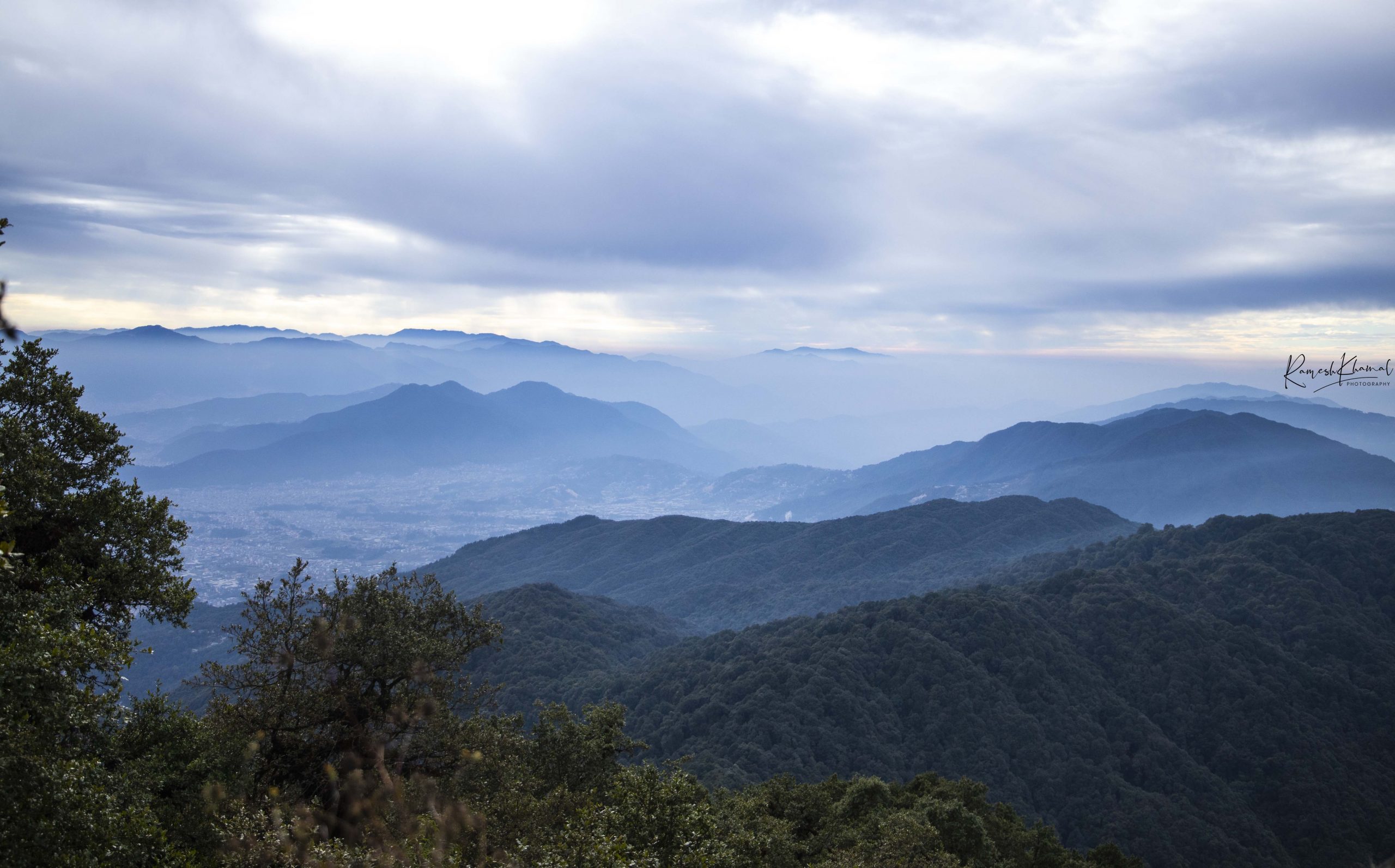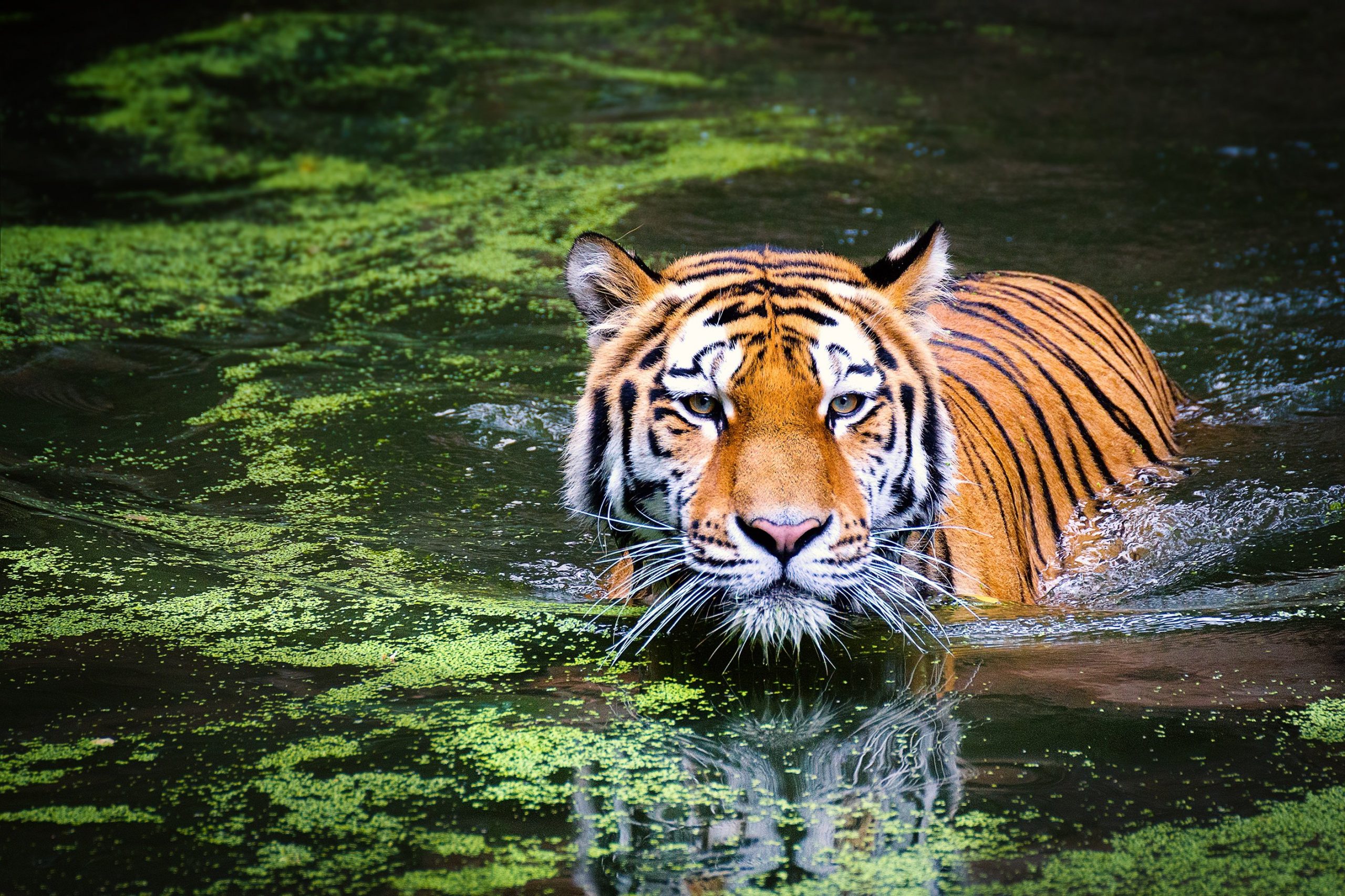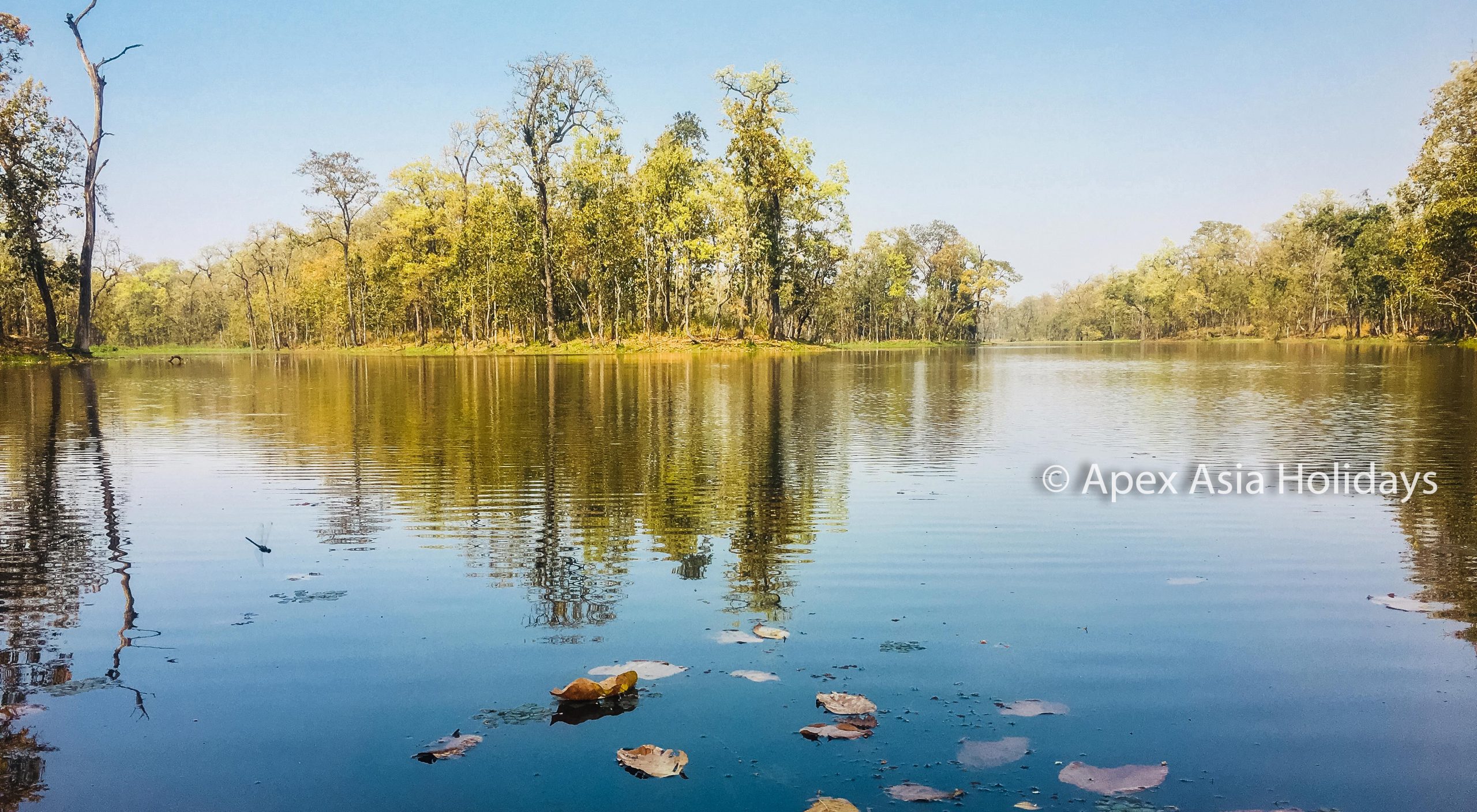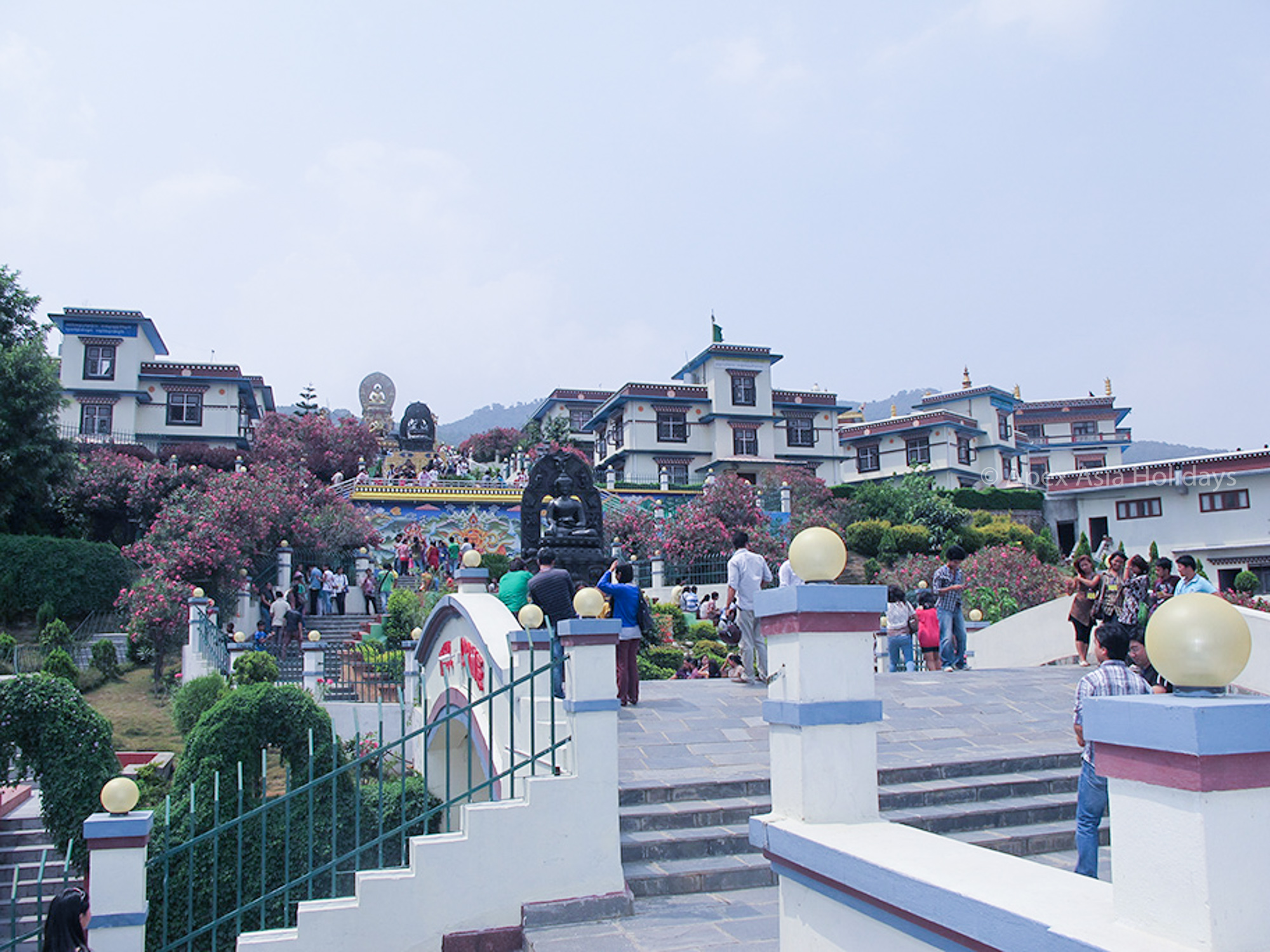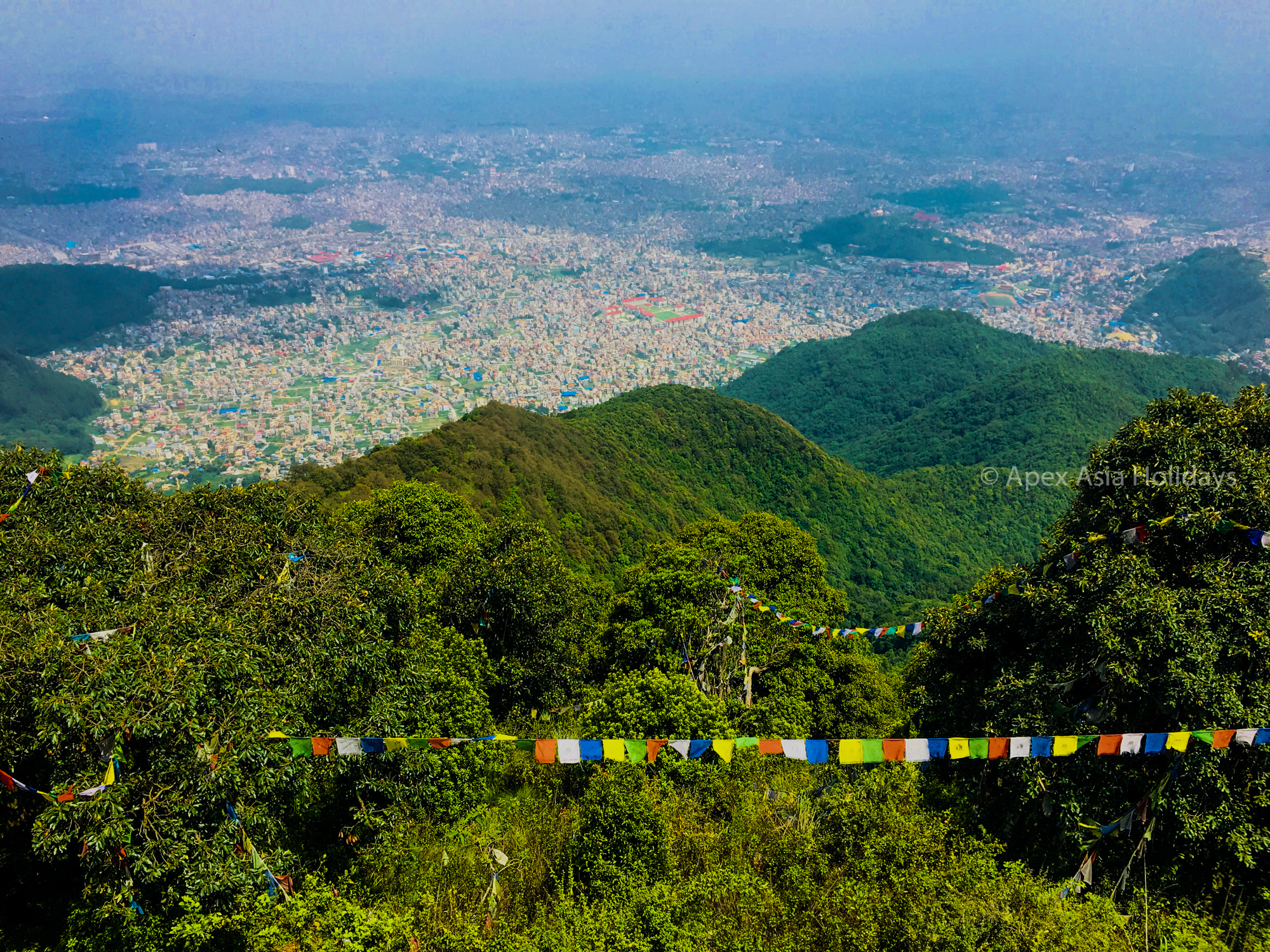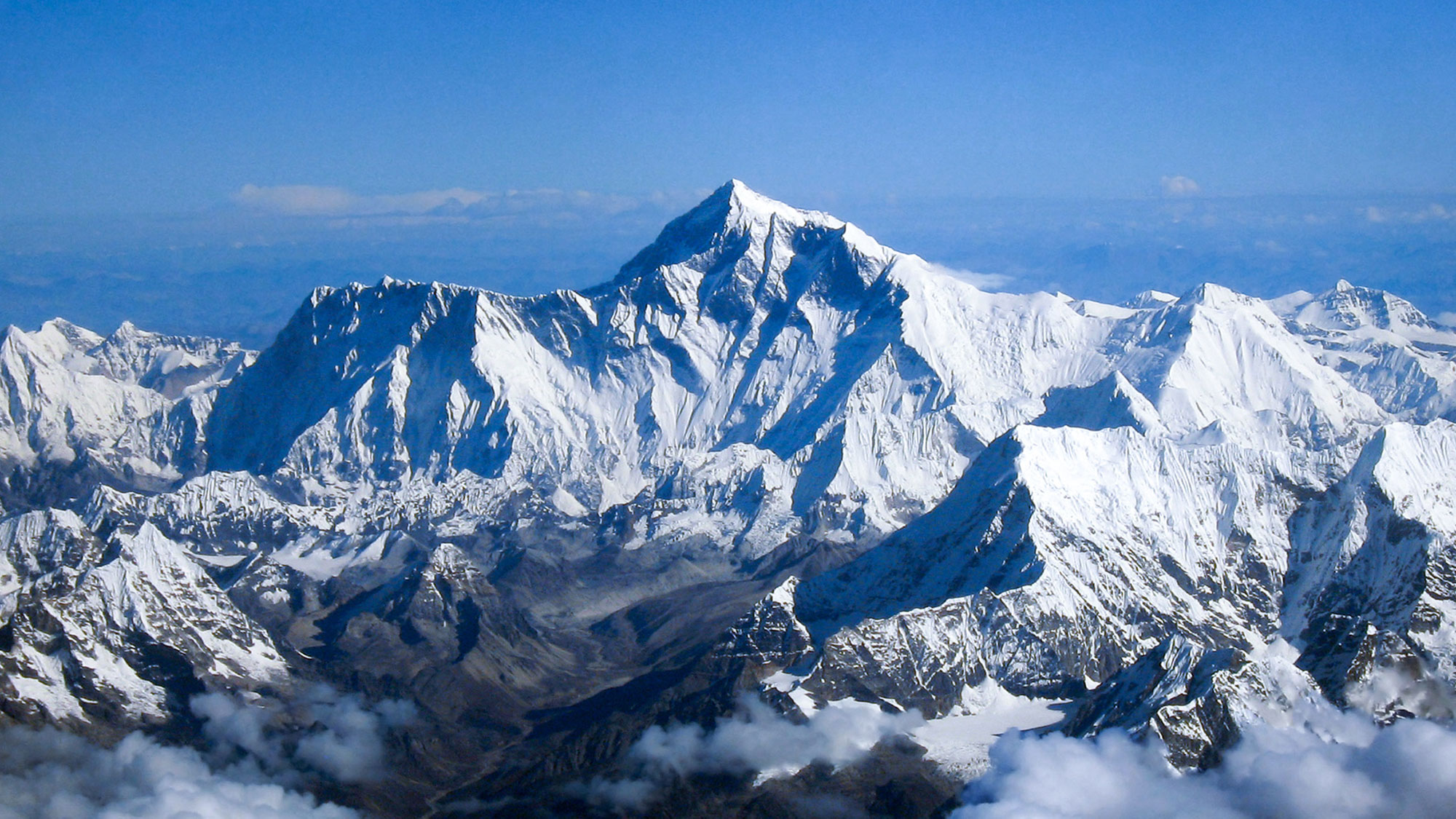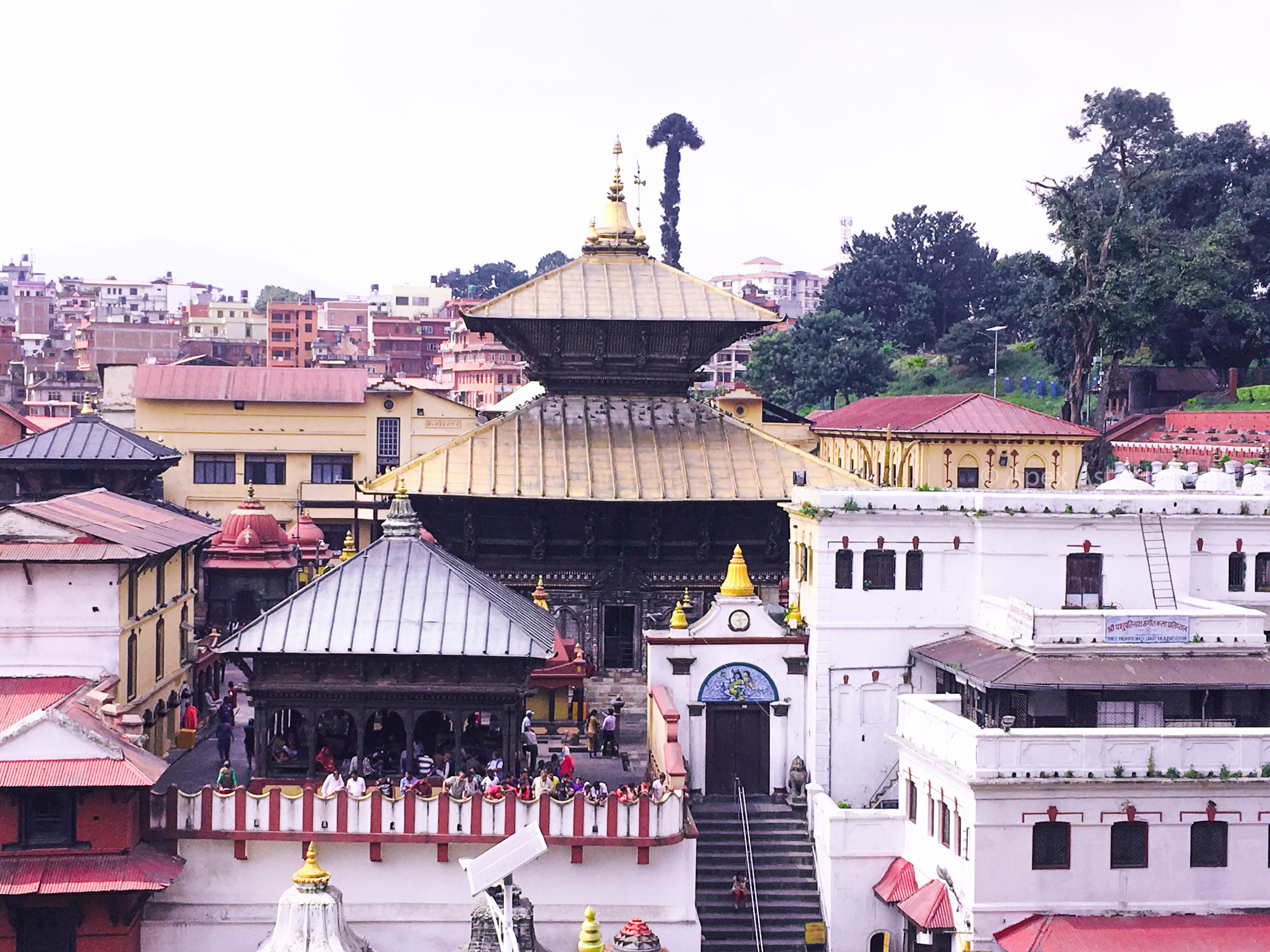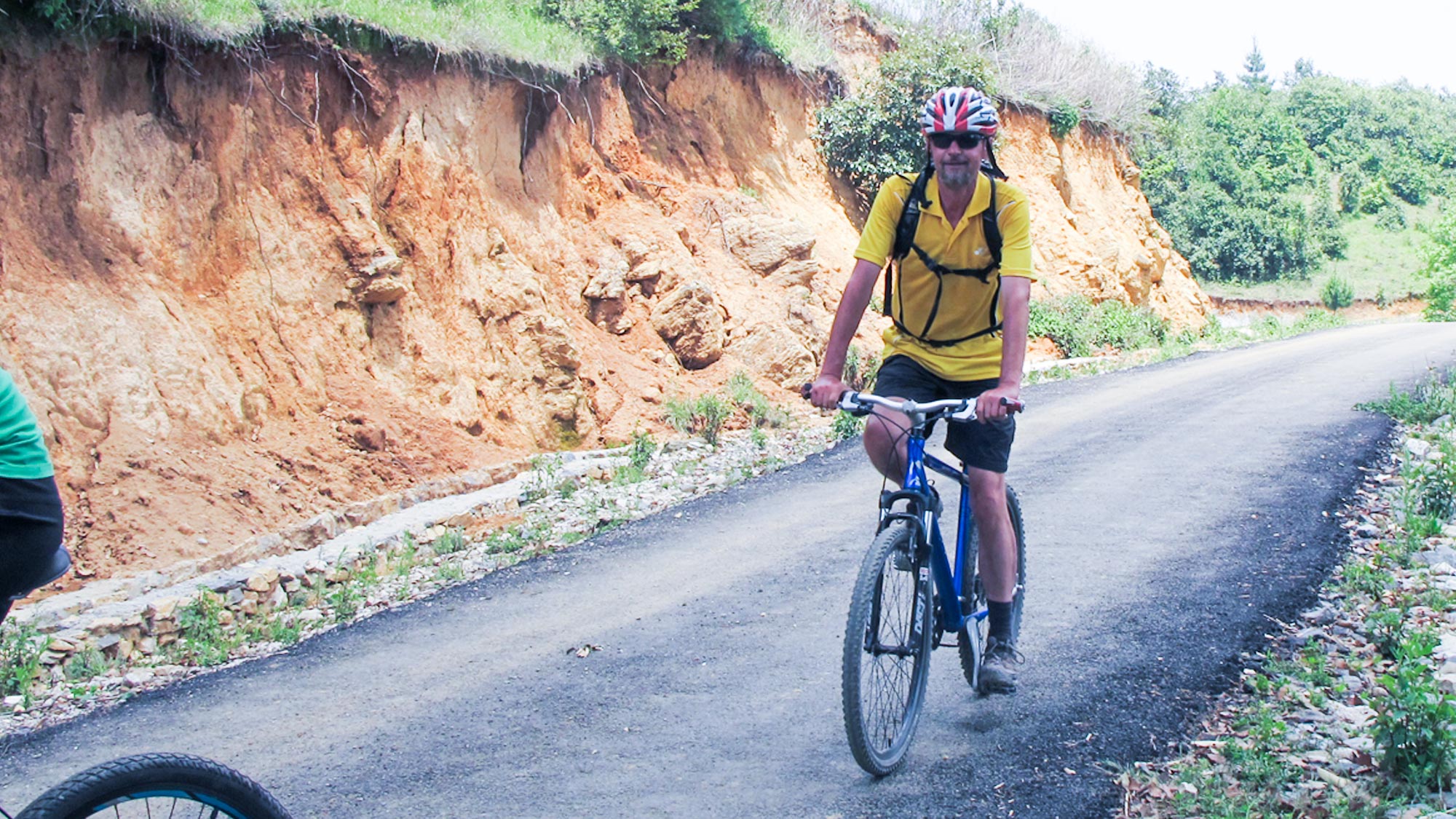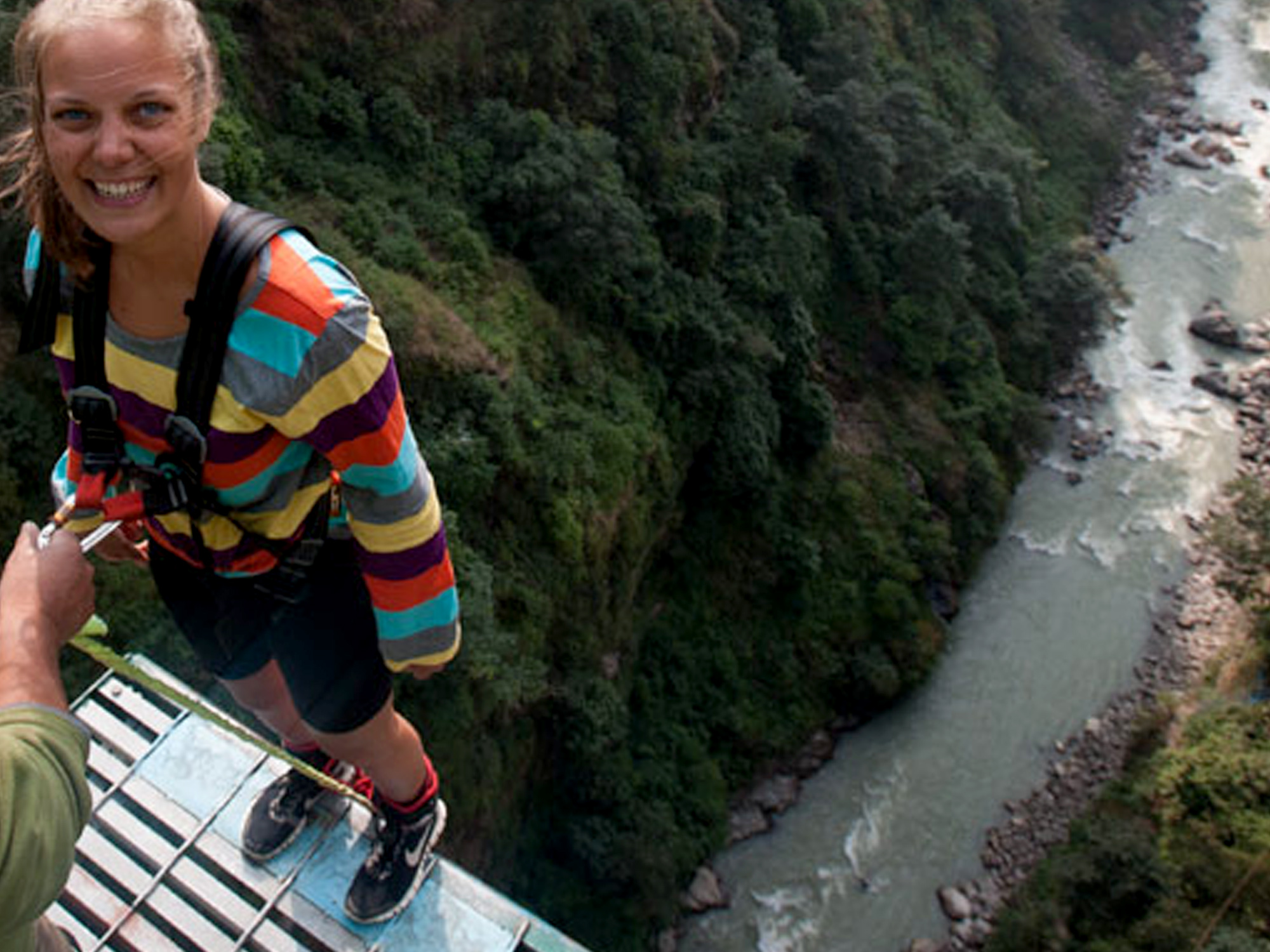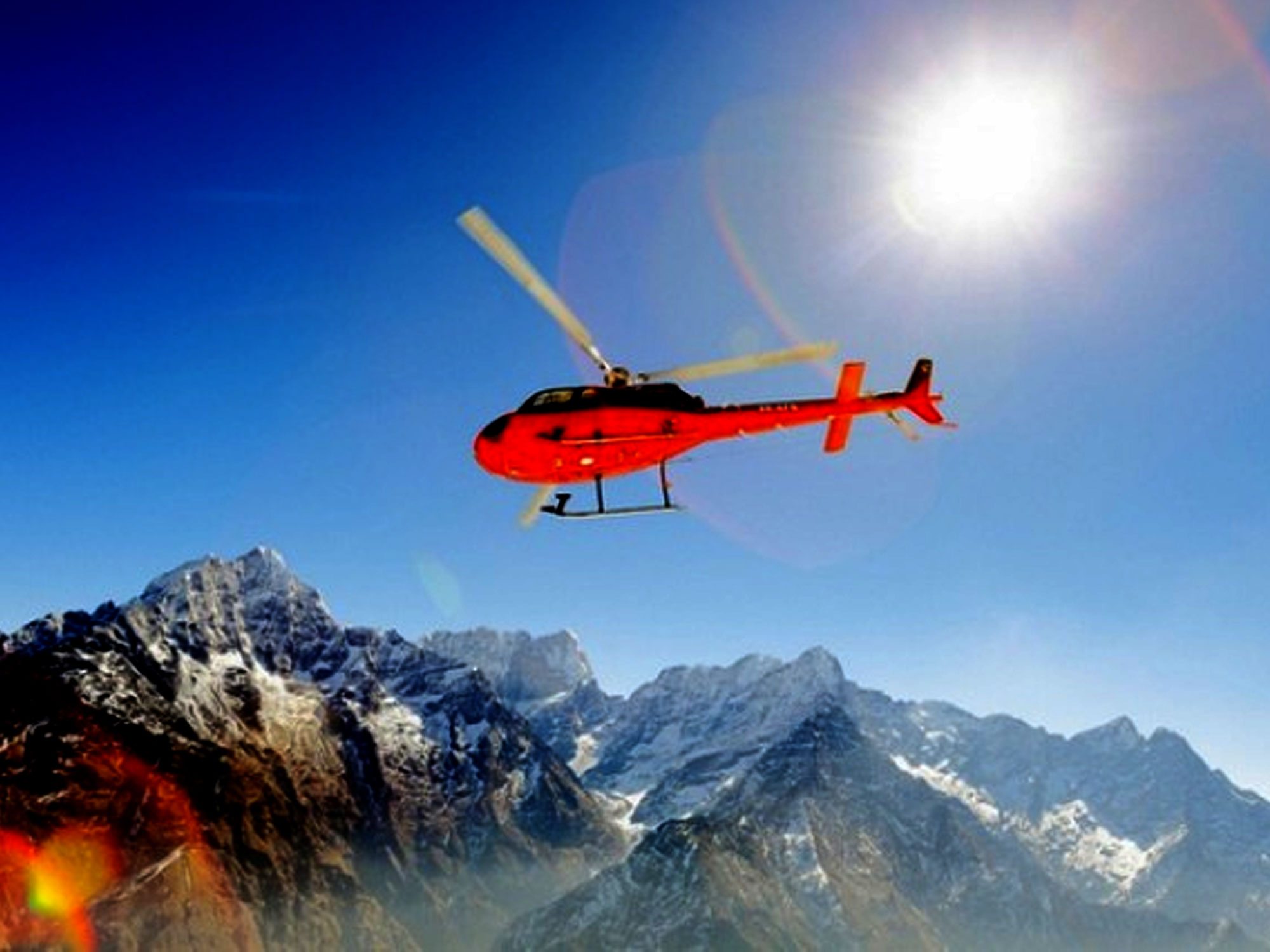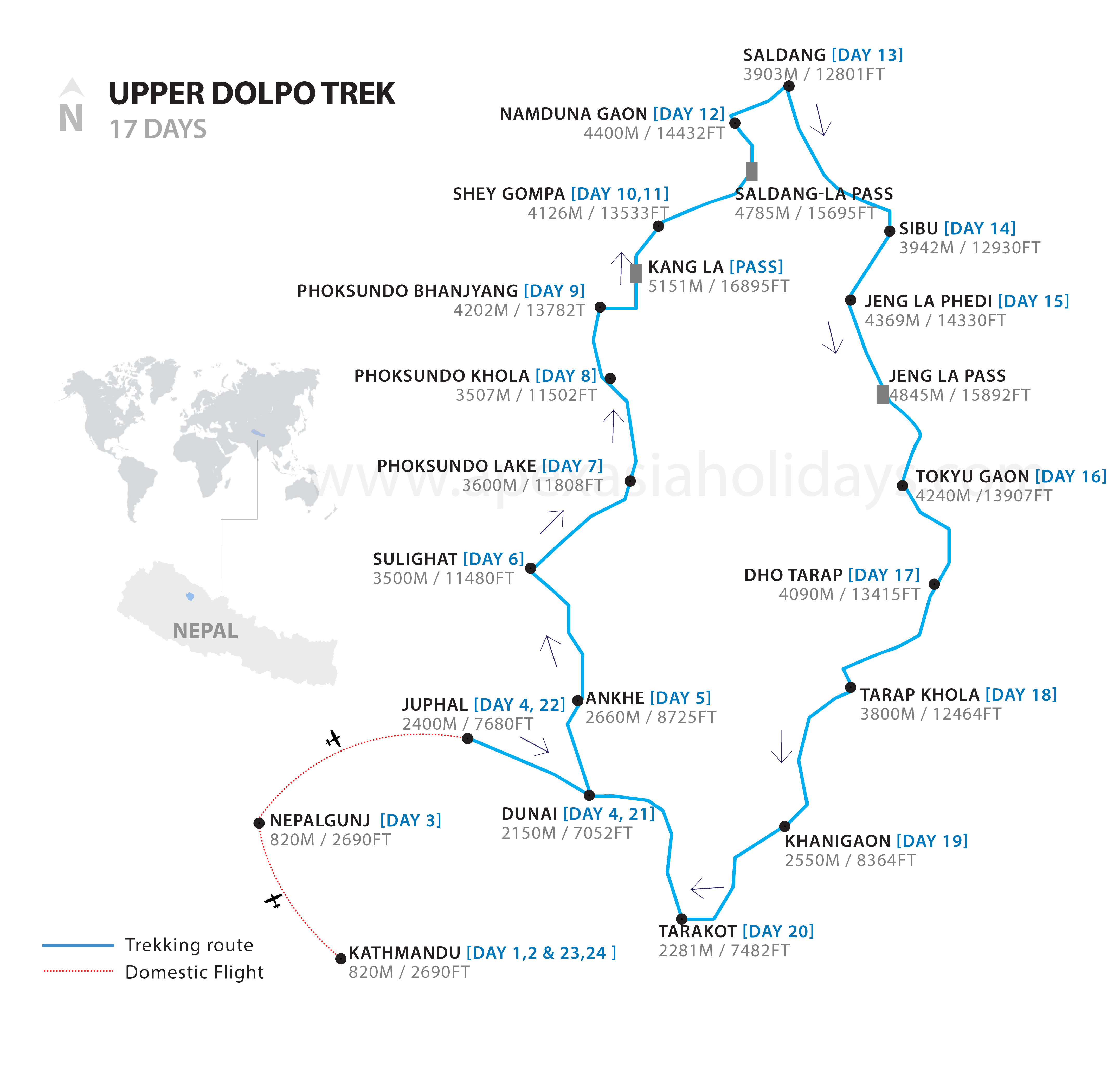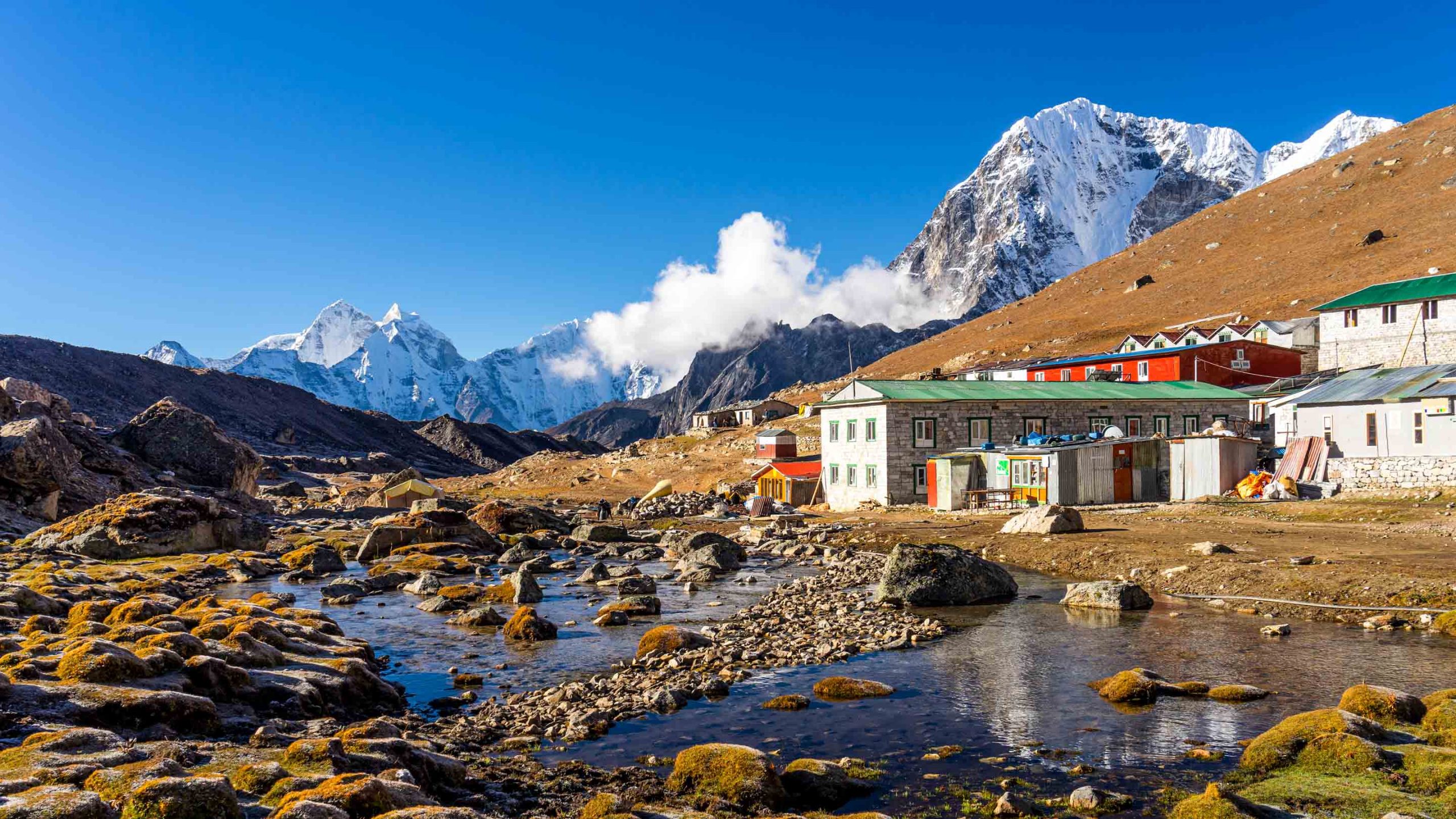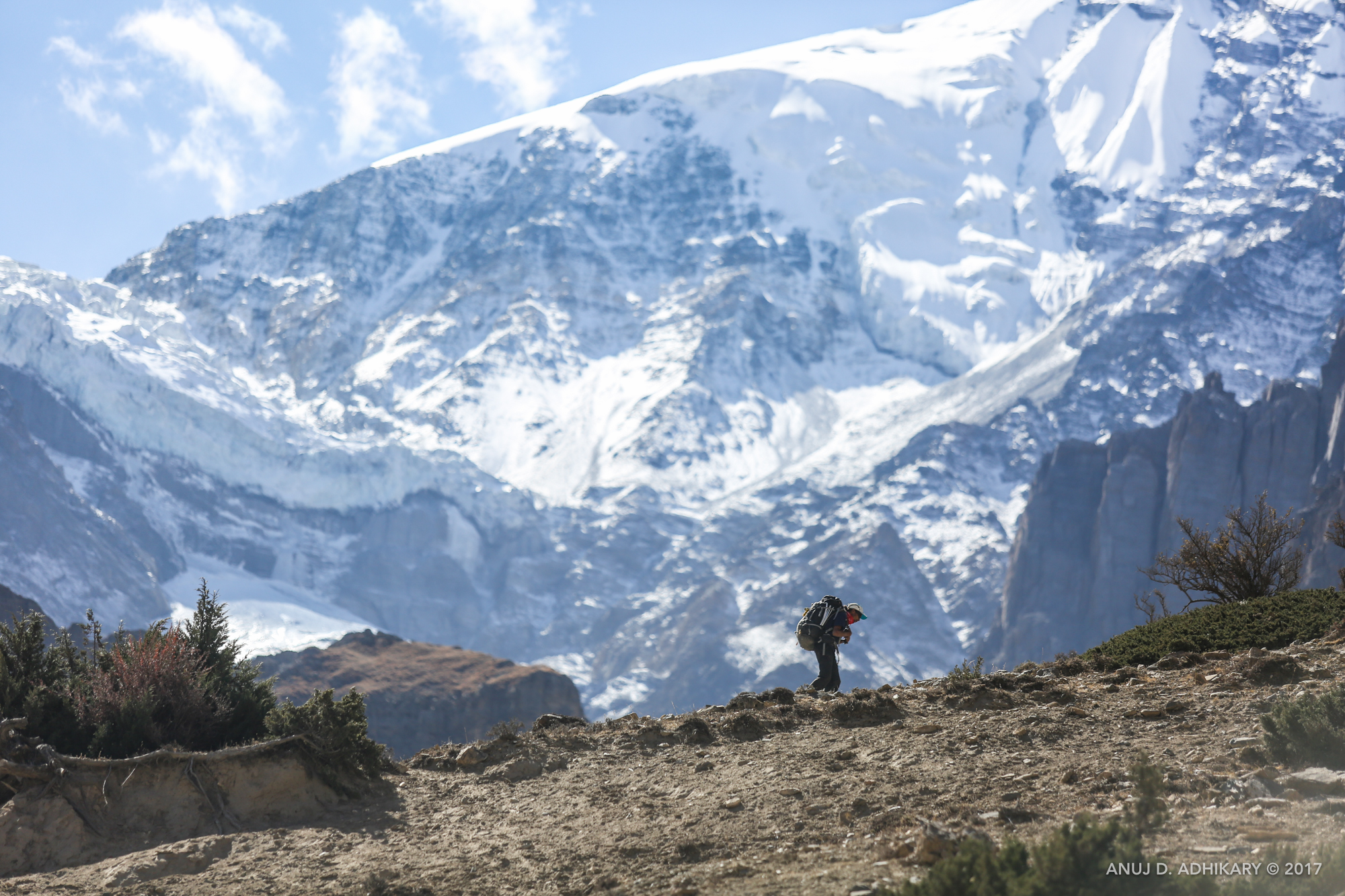
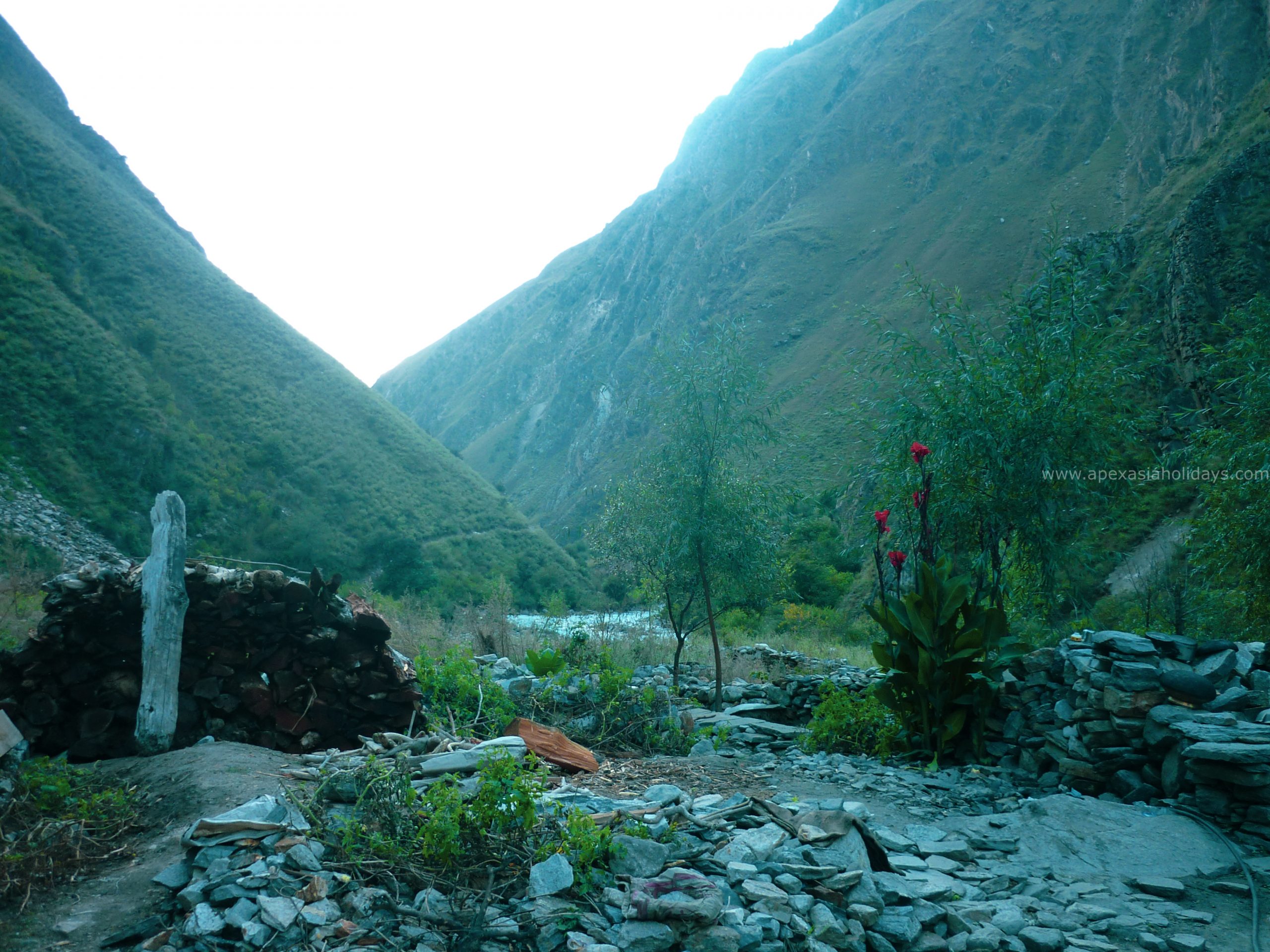
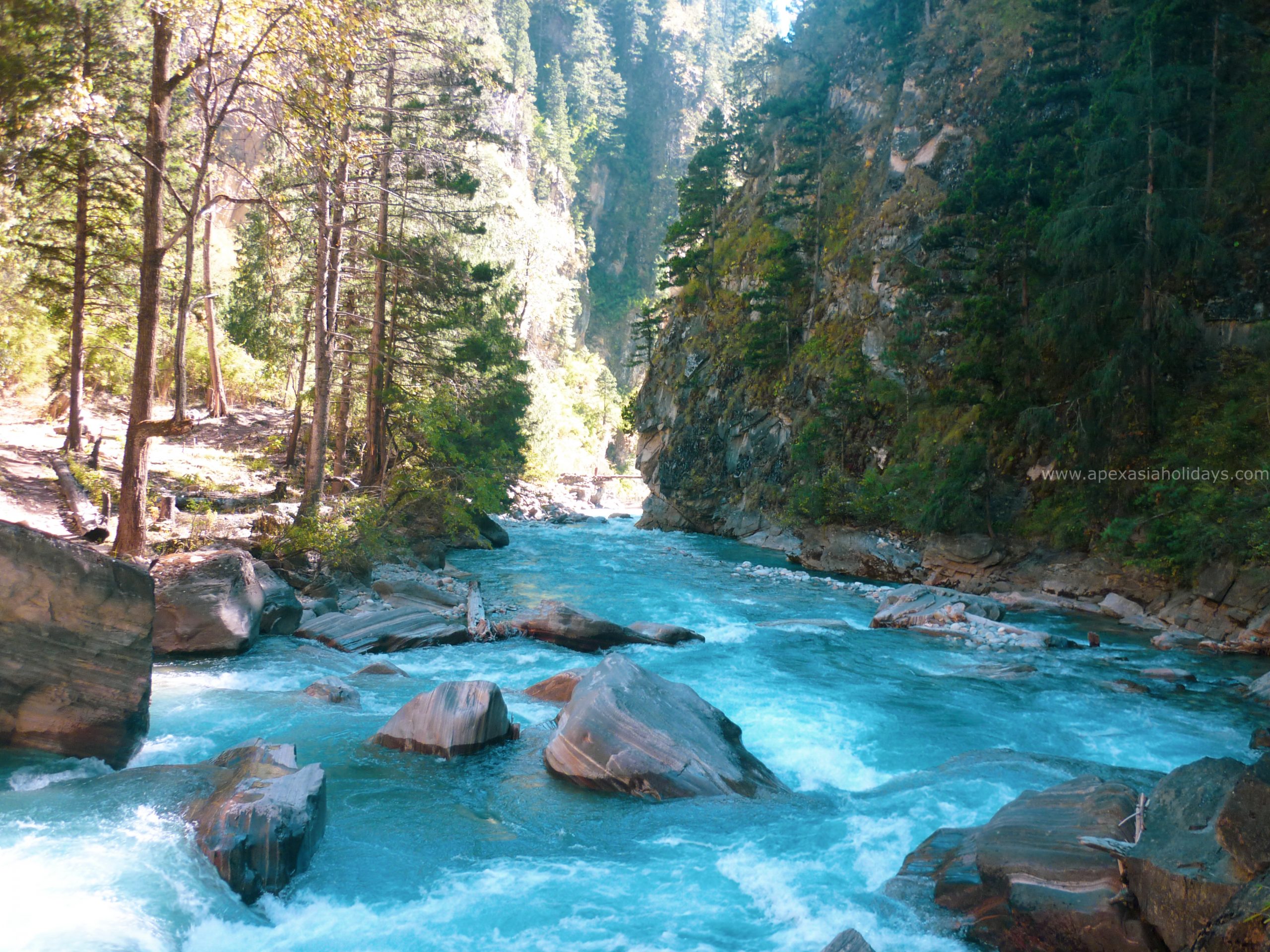
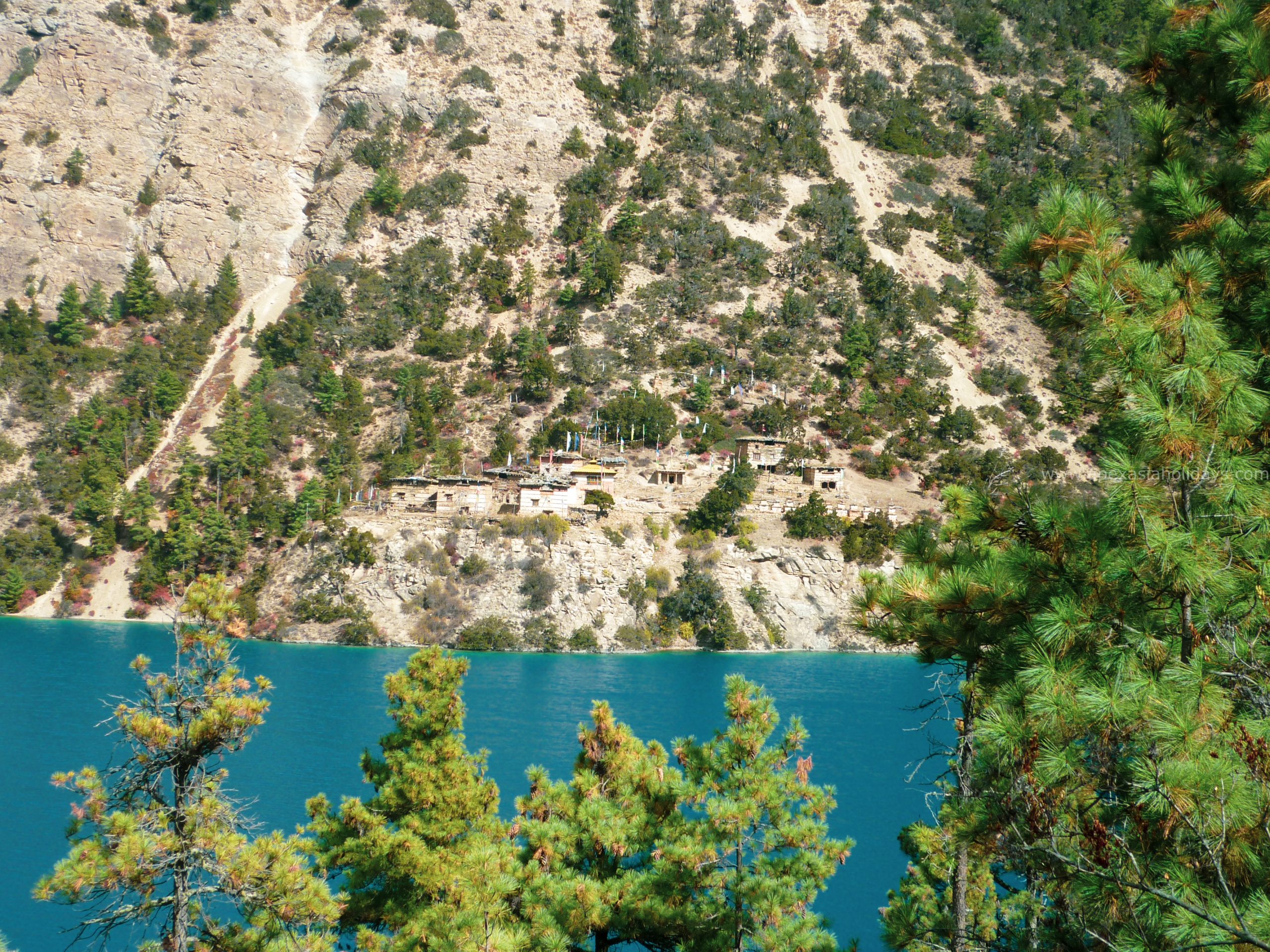
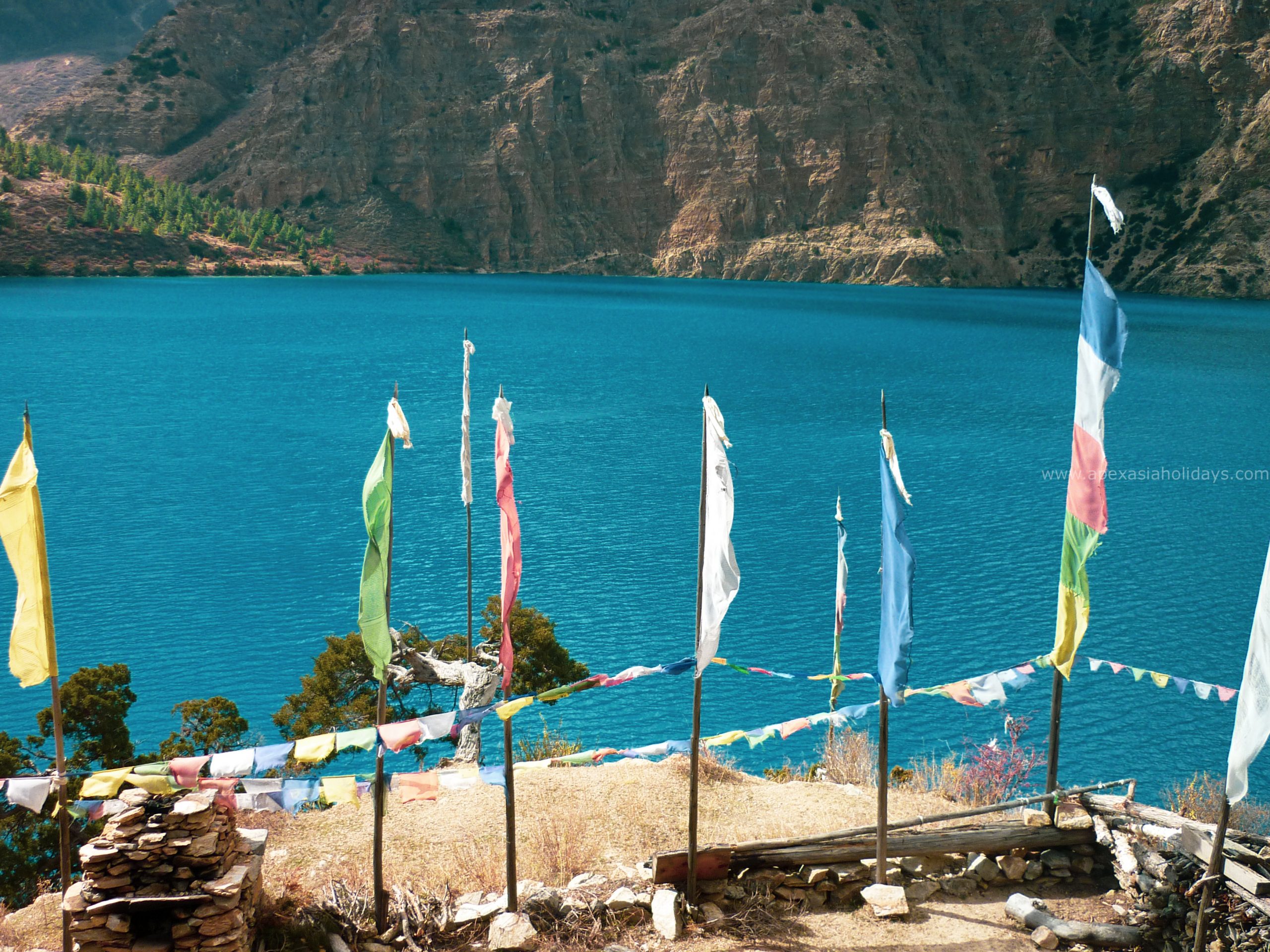
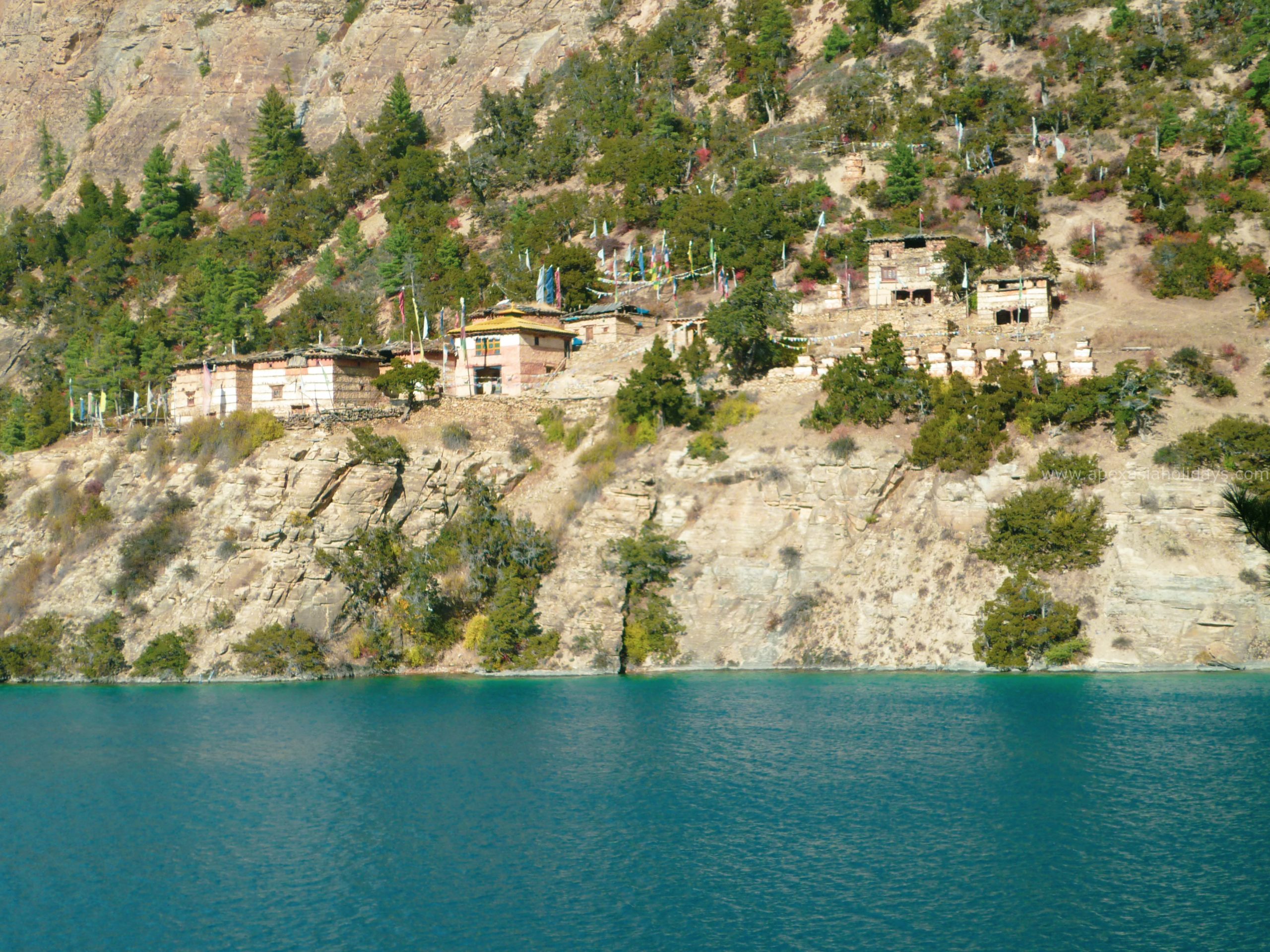
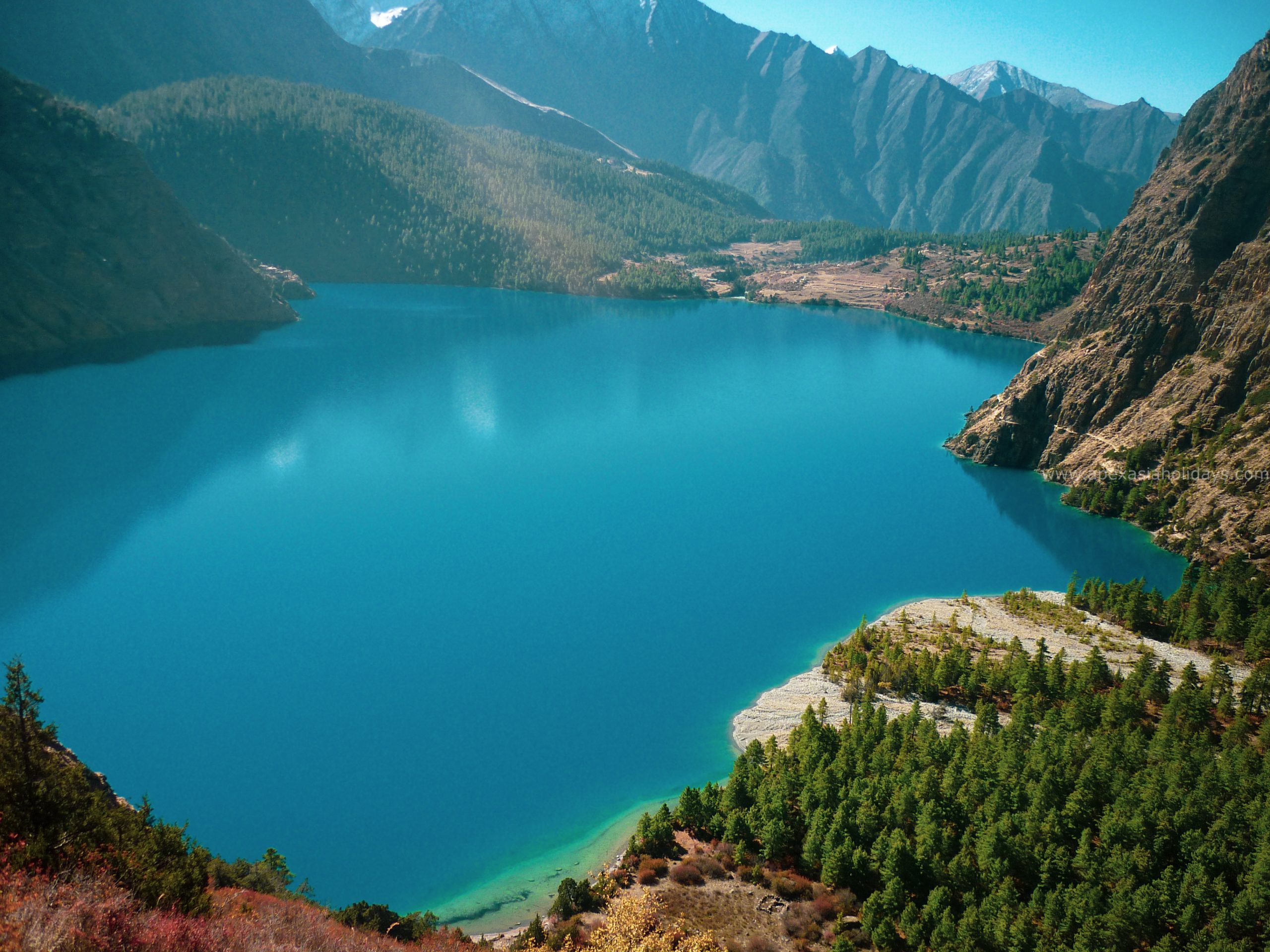
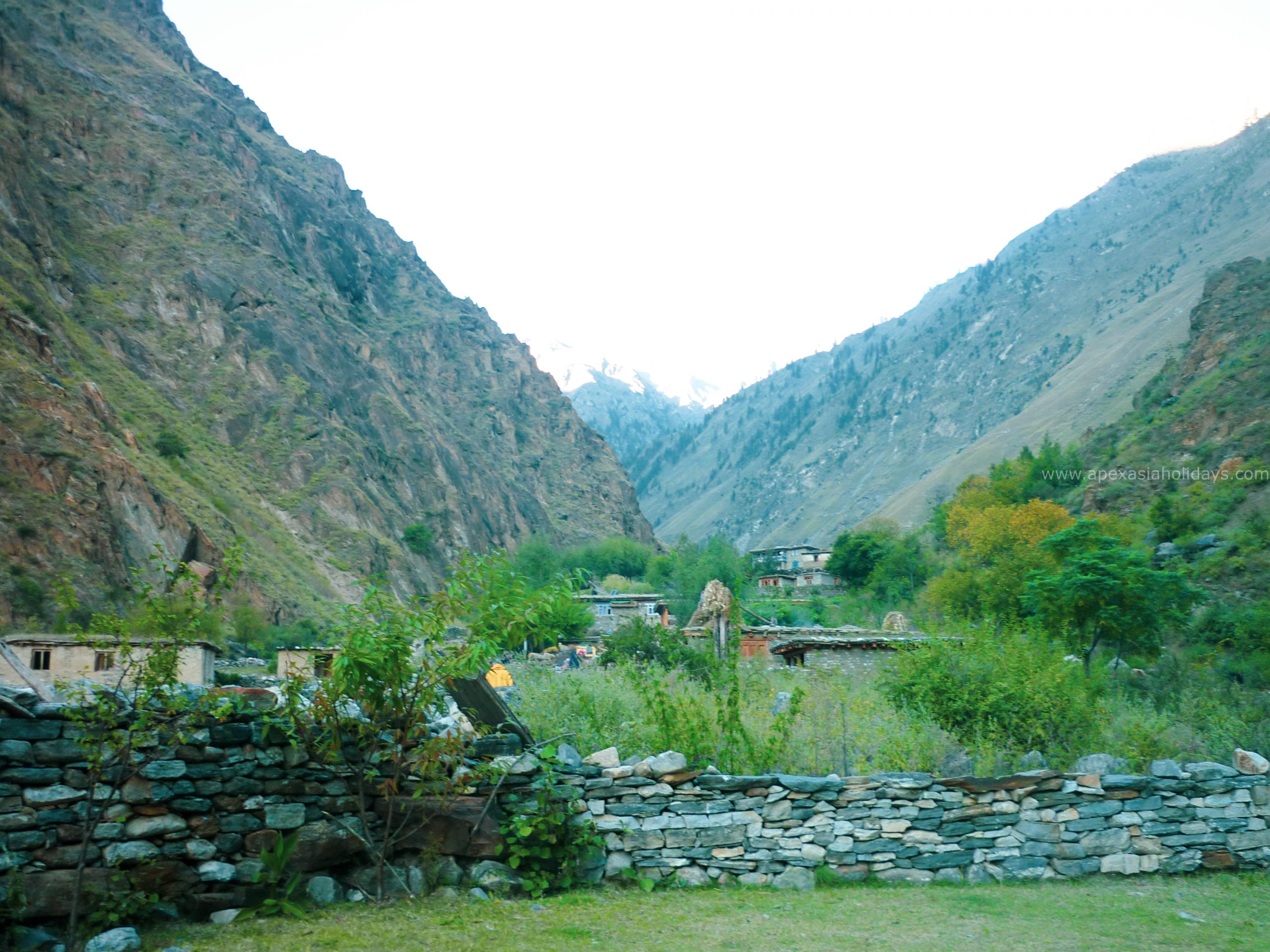
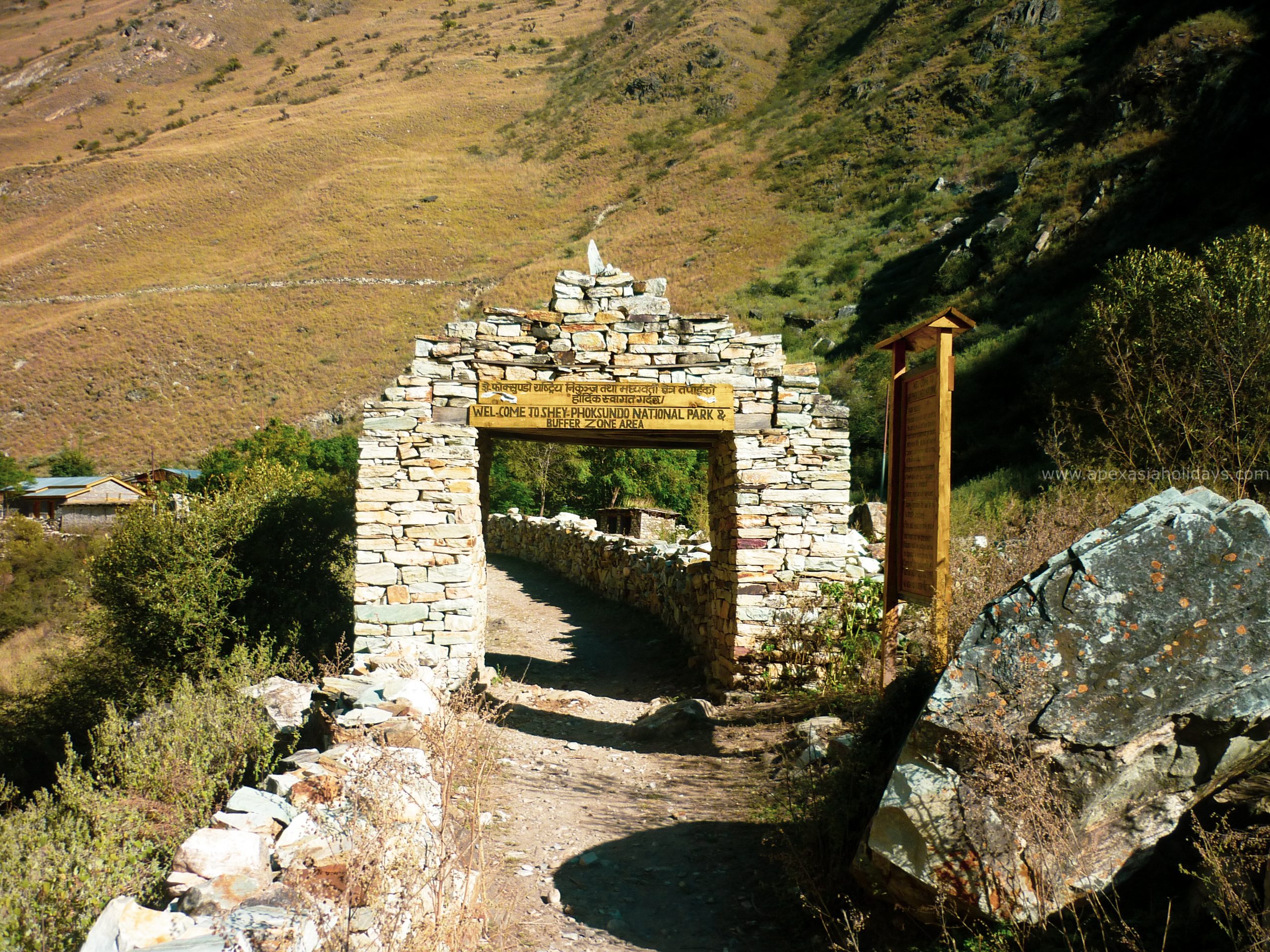
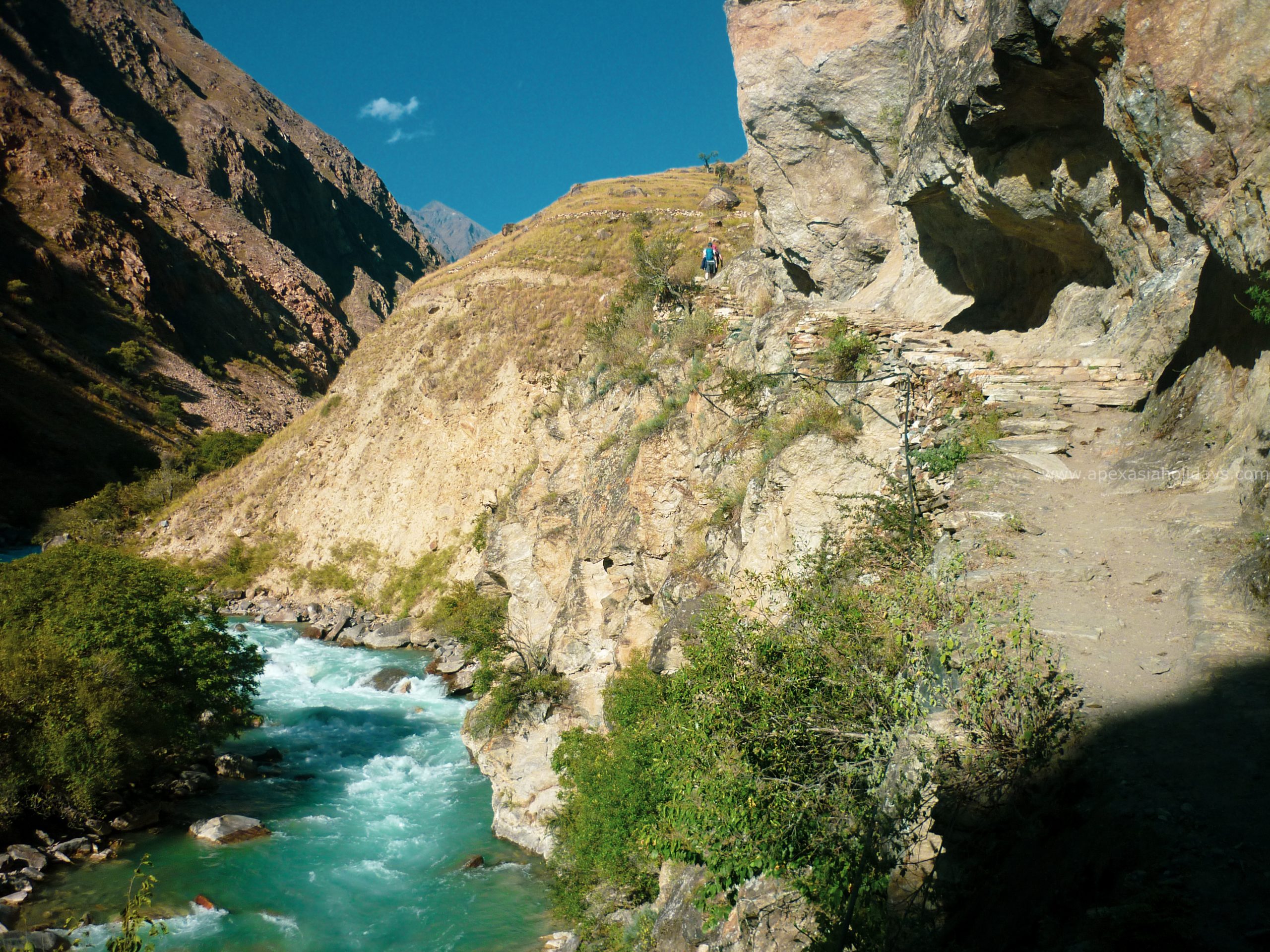
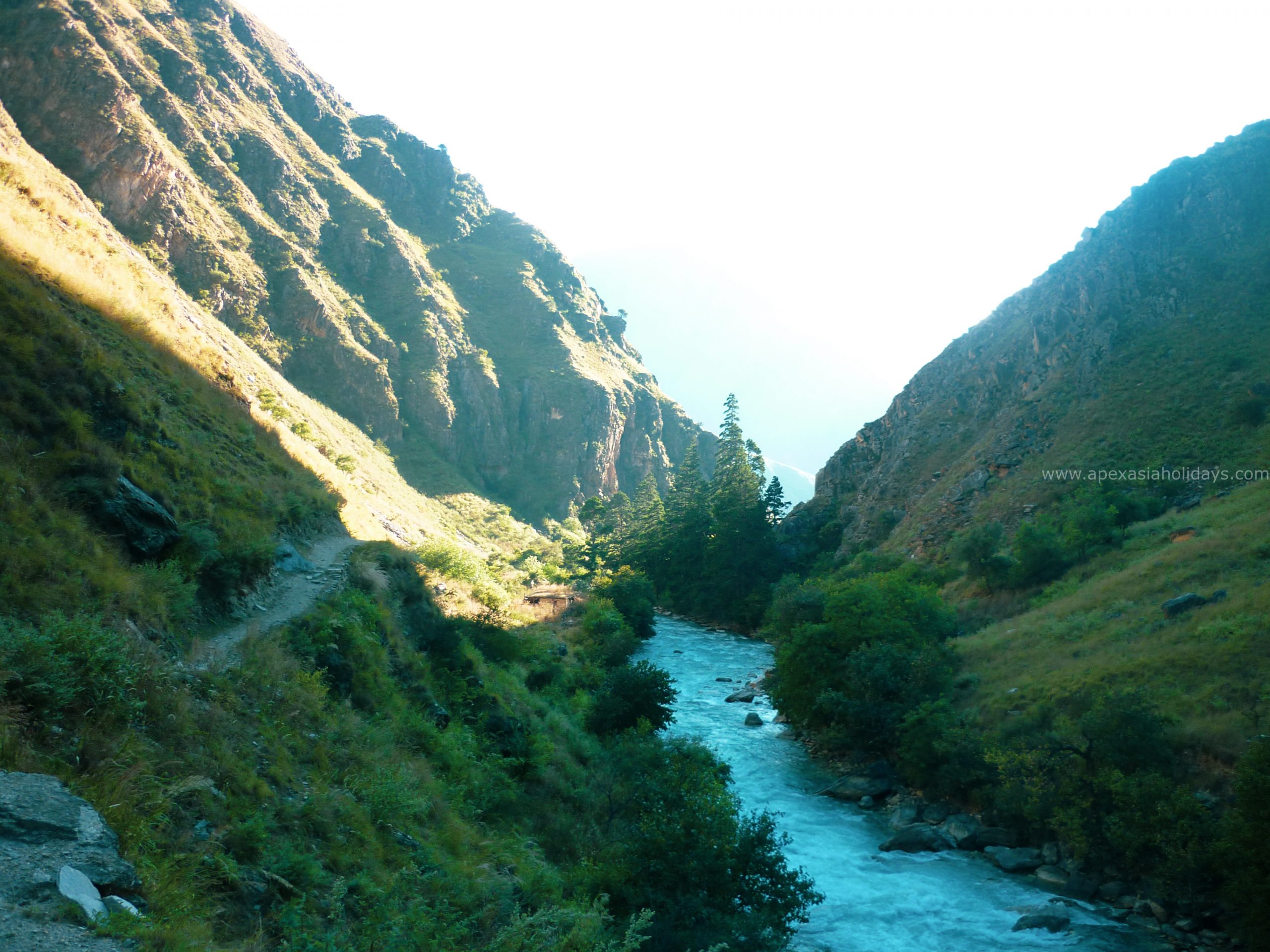
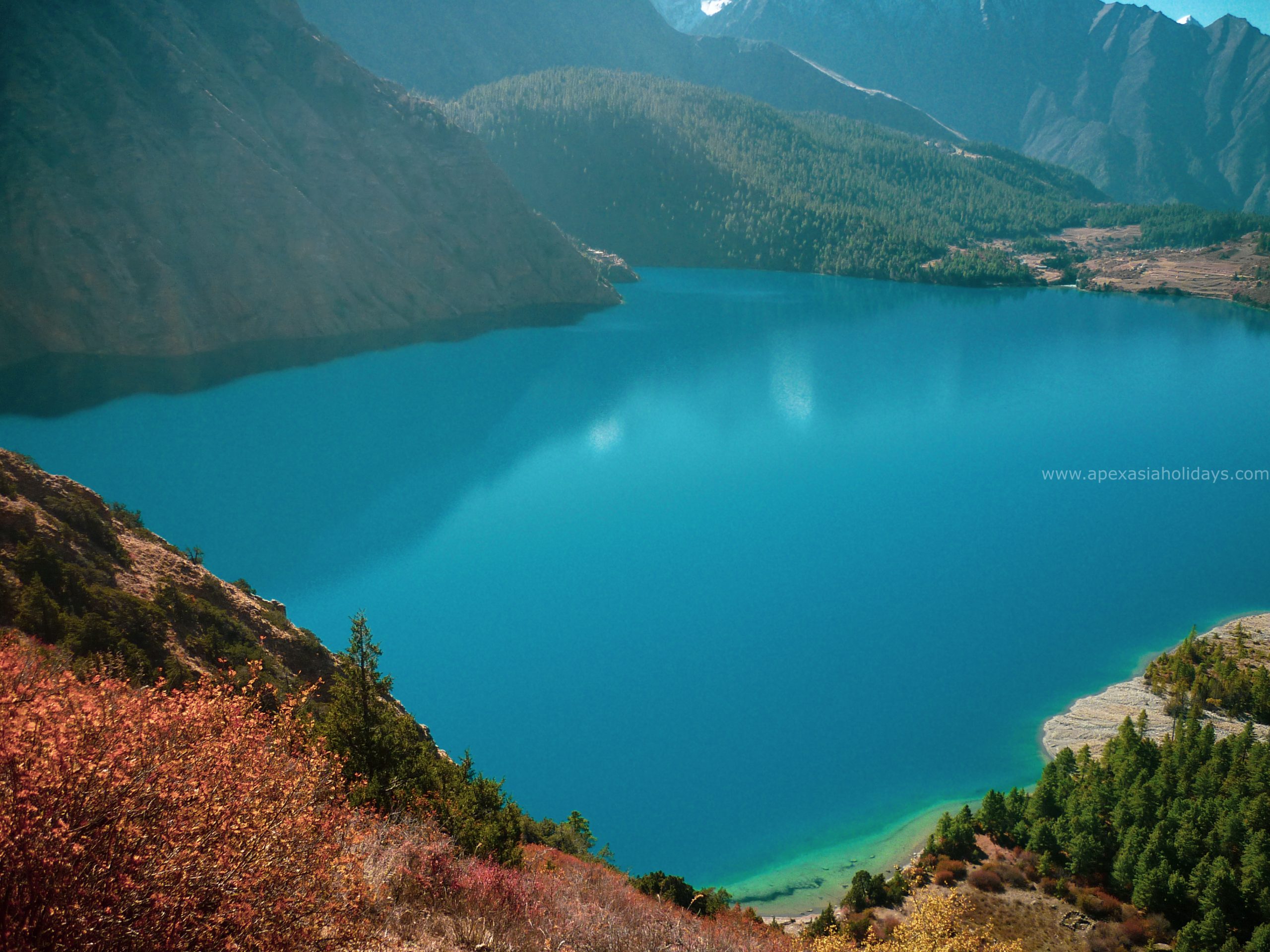
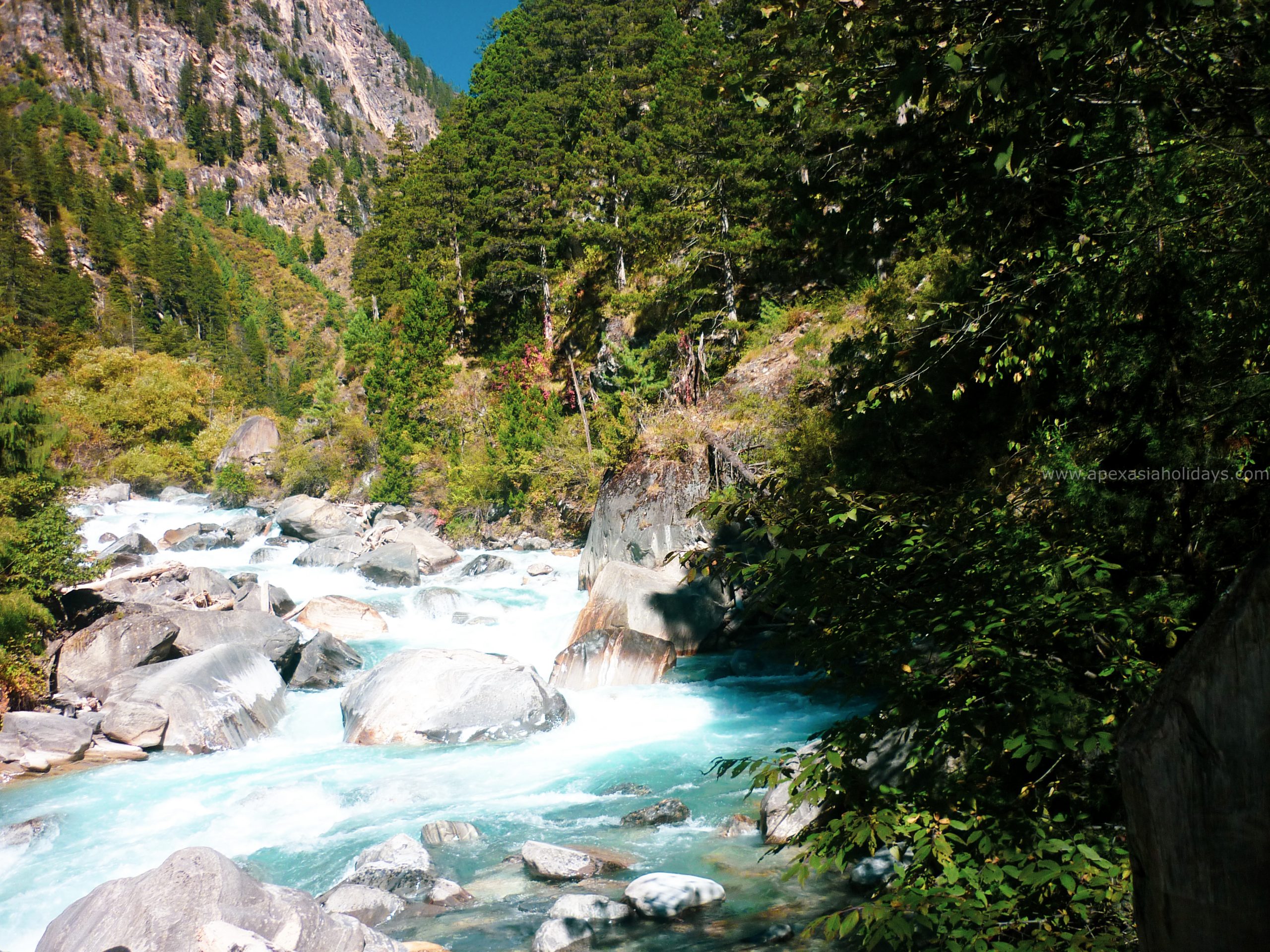
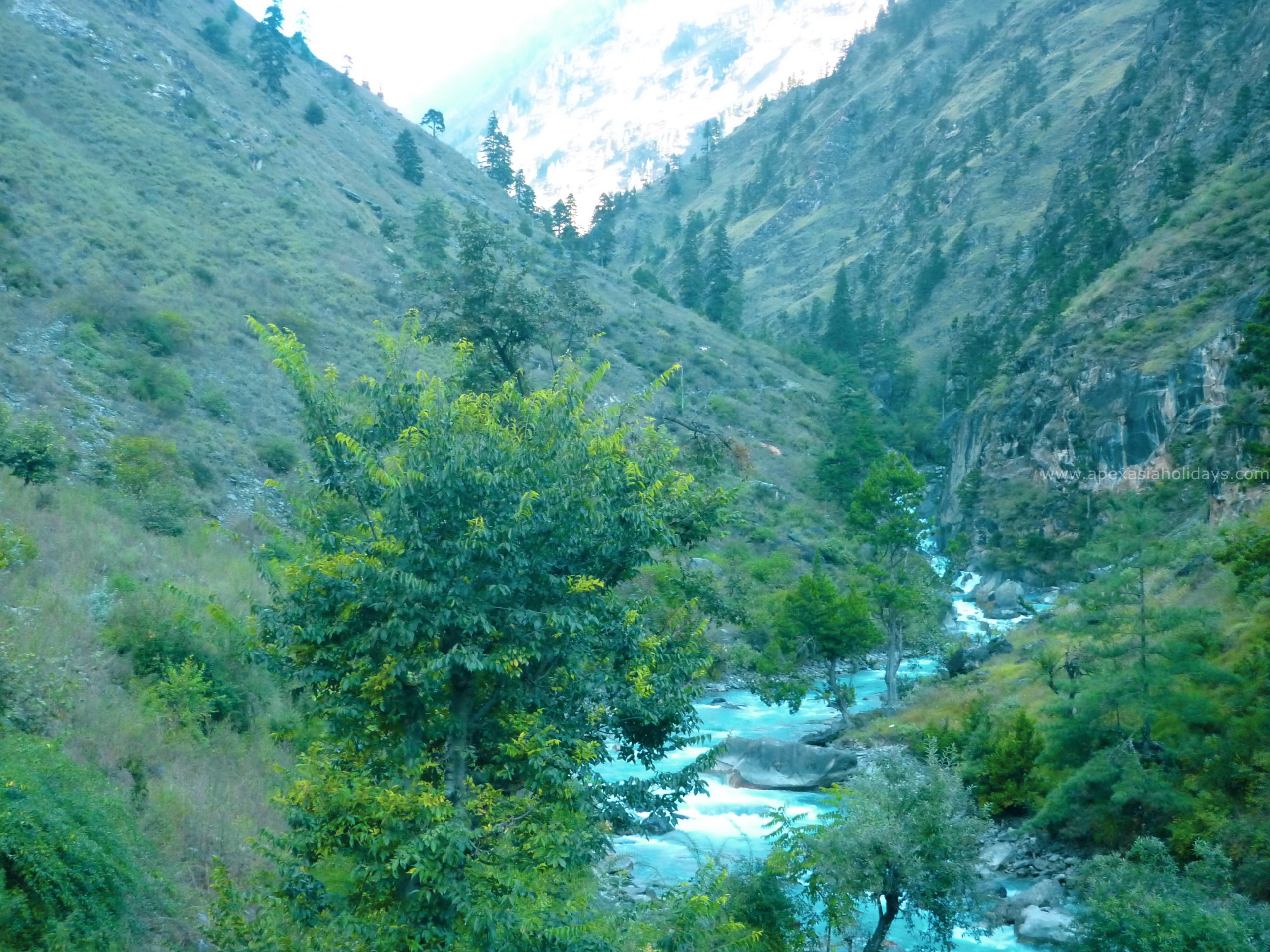














Trip Overview
Upper Dolpo Trek route passes many gigantic mountain ranges – Annapurna, Dhaulagiri, and Kanjiroba to name a few, and also passes through Lower Dolpo. It is at one time was a small kingdom in its own right. The wild remoteness, stunning mountain sceneries, and the innocent friendliness of the local people always fascinate us. Only a few hundred people live here and are among the world’s highest inhabitants, which is at the altitude of 4300m and above.
Peter Matthiessen’s “The Snow Leopard” and David Snellgrove’s “Himalayan Pilgrimage” have contributed to the mystique and attraction of Dolpo. Both writers visited Shey Gompa, to the north of the Phoksundo Lake, inner Dolpo. The main goal of most trekkers is to visit Shey Gompa but this Dolpo trek will take you even further into this mysterious land.
Tour Highlight
- Scenic flight to and from Nepalgunj/Juphal
- Shey Phoksundo Lake and National Park.
- Crossing passes of Kang La, Saldang La and Jeng La.
- Shey Gompa- the Buddhist monasteries
- Pristine mountains, Flora & Fauna, unique culture
Trip Itinerary
-
Day 1
Arrival at Tribhuwan International Airport
Welcome to Nepal! We will receive you the airport and transport you to hotel.
-
Day 2
Pre-trip meeting and sightseeing around the Kathmandu valley
An Apex the Asia Holidays representative will organize a small pre-trip meeting at the hotel lobby before commencing the day trip. Please bring a copy of your passport, travel insurance document and three passport-size photos.
Then we head off for sightseeing of the Kathmandu Valley. You will visit three main places: Pashupatinath, Bouddhanath and Bhaktapur Durbar Square. The Pashupatinath Temple is one of the most revered temples for Hindus. Every year thousands of pilgrims visit the temple from different countries. Bouddhanath is located in the outskirts of Kathmandu city and is a holy Buddhist monument. Meeting monks, learning about Buddhism and stupa dome is the main attractions of Bouddhanath. Finally, Bhaktapur Durbar Square large premises of ancient house and temples is a settlement of local ethnicity called Newars. Fifty-five-window Palace, golden temple, pottery house are definitely worth a visit in the tour.
After the tour, we head back to Thamel, where our guide will help you with checking gears required for the trek. There are plenty of trekking shops in Thamel, so you can rent or purchase if you’ve missed anything to bring.
-
Day 3
Fly to Nepalganj from Kathmandu
Today you will fly to Nepalgunj, southwest from Nepal. It is a one-hour flight. Nepalgunj is very close to the Nepal-India border, which is only 3kms away from here.
-
Day 4
Fly to Juphal (2,400m). Trek to Dunai (2,150m)
The flight to Juphal takes about 35 minutes and we walk by the Bheri River to reach a large town called Dunai.
-
Day 5
Trek to Ankhe (2,660m)
After breakfast, the trail heads off to Ankhe. Cross a suspension bridge and take the western path to Suli Gad. Continuing the trail with the roaring sound Thuli Bheri and Sulighad River, you pass through an area, which is dense with marijuana plants but also has crops for the villagers and animals including millet, pumpkin, potatoes, sweet corn and chilies. You continue to track the river and eventually reach the settlement of Anke, which is also the entrance to Phoksundo National Park. You pass through three villages, which have a strange name connection: Parela, meaning eyelash, Rahagaon meaning eyebrow, and Ankhe meaning eye.
-
Day 6
Trek to Renje (3,104m)
The trail to Renje is up and down and crossing the bridges. Once you cross the bridge then steeply ascent through the narrow path, squeezing between cliffs, and again descend and ascend takes you campsite that is on side of Sulighad River.
-
Day 7
Trek to Phoksundo Lake (3,600m)
The trail is fairly easy on the first part, i.e. till Sumdo, then we head to about 3475m to reach a viewpoint from where you can see the highest waterfall of Nepal that is 300m and also you can see the first view of Phoksundo Lake. From the crest, you will descend to Phosksundo Khola and Ringmo village – houses, chortens, and mani walls are made out of mud plastering. From the town, you will make the short walk to shores of Phoksundo Lake for the campsite.
-
Day 8
Trek to Phoksundo Khola (3,507m)
We walk along the shore of Phoksundo Lake and start a steep climb up, to 4040m and nosedive valley to the floodplain of Phosksundo Khola and trek to the campsite alongside the river. We camp out near the forest to avoid strong winds dominant in the valley.
-
Day 9
Trek to Phoksundo Bhanjyang (4,402m)
Today we cross a few streams without bridges, so it is advisable to wear sandal or suitable knee-deep footwear. North heading trail becomes narrower with impressive vertical cliffs on either side. The trail brings you to a sheep meadow where the trail swings up a steep gorge. The continued climb up the trail brings to top from where you can see the Kang La Pass. Your camp today will be just before the pass in a place that Peter Matthiessen christened Snowfields Camp.
-
Day 10
Cross the Kang La pass (5,151m) and trek to Shey Gompa (4,126m)
The trail today is quite hard, it takes about 3hrs to reach the top of Kang La Pass, the view from the pass makes the walk worth it. After the pass the descending trail brings you to the valley floor, no more than 45 minutes, you make a long twisting trek along the banks of the river, crossing it once. A red chorten signals your arrival at Shey Gompa where a picturesque wooden log bridge leads up to the Shey Gompa.
-
Day 11
Rest and exploration day at Shey Gompa
Shey Gompa is the first Kagyupa monastery, which was built in the 11th century by Lama Ten-sazin-Ra-Pa. The monastery belongs to Chaiba community the followers of Padmasambhava and Kagyu. Shey means crystal – this monastery is also known as the Crystal Mountain. Shey is famous for ancient Buddhist cultures that was brought by Druthu Yeshe from Tibet many years ago. The strange Crystal Mountain is situated in the west from the Shey Gompa. The cliffs laced with quartz and entrenched with a rich variety of fossils is quite attractive.
-
Day 12
Cross the Saldang-La pass (4,785m), and then trek to Namduna Gaon (4,400m)
The trail begins to twist over the rock and coarse eroded soil finally it brings to a flat spot, weather permitting it would be better placed for lunch. The trail ascends towards Saldang-La Pass from where you can enjoy views of the dry landscape of Mustang and distance snow peak of Tibet. The descending track from the pass is quite long and hard, but finally we’re welcomed by the sight of grazing yaks and sheep at a pasture. Tents here are the signal we’re approaching Namduna Gaun. The monastery of the village is Namgung, which is the Karma-Pa clique made out of red stone structure.
-
Day 13
Trek to Saldang (3,903m)
The trail begins along exhilarating cross along the grimy barren mountains. The view down towards the valley is perfect – neatly terraced fields showing the bright patches of green and ripening crops. First, you walk up to Nam Khong Nala, the biggest village of inner Dolpo area with the same altitude of Ringmo, it is totally different. Ringmo, a Himalayan village is situated below the tree line while Saldang belongs to the arid zone of the trans-Himalayan Tibetan plateau.
-
Day 14
Trek to Sibu (3,942m)
From Saldang village way down to river passing through the stupas, heaps of Mani stones, terraced field, chortens via Namdo village. Namdo monastery is located near the riverbed. The village stretches for 5km with sixty houses and near-about four hundred habitants.You camp near the small settlement of Sibu, right on the river bank.
-
Day 15
Trek to foot of the Jeng-La (4,369m)
The start of the trail is fairly easy and after about 2hrs it we cross stream after which the path spirals up, taking us to a pleasant meadow.
-
Day 16
Cross the Jeng-La pass (4,845m), trek to Tokyu Gaon (4,240m)
From the campsite, its takes about 2.5hrs to get Jeng-La Pass, from where you can see views of Dhaulagiri Himalaya massif range. The rough track descends to Tarap Chu, the valley contains the ten villages with cultivated lands, Gompas and Chortens. You stop for the night at Tokyu Monastery.
-
Day 17
Trek to Dho Tarap (4,090m)
The trail for today is broad and well-traveled. Along the trail, you will cross many Mani walls and Chortens. The French School is just outside the village where you will stay for the night. Magars are the main ethnic group of the village and in few numbers, Tibetan also reside here. A hike to Buddhist Gompa is very worthwhile, a resident of Lama who is very happy to show his Monastery.
-
Day 18
Trek to Serkam (3,630m)
The trail follows the Tarap Khola through the narrow gorges; along the trail, you may see blue sheep, marmots, yaks etc. The trails are improving, the rocks are being blasted and you will cross a steel suspension bridge during the day that has been built to facilitate movement of people and animals. You reach your overnight camp on a grassy band by the river.
-
Day 19
Trek to Khani Gaon (2,550m)
The path follows the gorge of Tarap River through the narrow trail. Some parts of the path include stone steps. A thrilling day in deep and tremendous gorge, the campsite is a pleasant meadow in the shade of a stand of trees.
-
Day 20
Trek to Tarakot (2,281m)
Undulating trail brings you to a fertile valley of the Barbung Chu through the numerous crop field including the millet field, sweet corn, barley, green beans, chilies, and marijuana. The night halt for today is Tarakot, high above the river; it is also an old fortress.
-
Day 21
Trek to Dunai (2,052m)
Continuing on descending trail is fairly easy, the track runs by the Bheri River and reaches Dunai. Now the mystical land of Dolpo circuit trek is over.
-
Day 22
Trek to Juphal (2,404m)
Today we go back to Juphal, where we landed on the first day of the trek. The final hour of the climb is steep up, if you remember the first day.
-
Day 23
Fly to Kathmandu via Nepalgunj
We fly early morning from Juphal to Nepalgunj, and then take a connecting flight from Nepalgunj to Kathmandu. Both the flights are scenic: while flight from Juphal gives you good close up views of giant peaks, including Annapurna and Dhaulagiri, flight from Nepalgunj gives you a panorama of the Himalayas afar and the rugged midhills of Nepal.
-
Day 24
Leisure day and farewell dinner in Kathmandu
Today is a leisure day, and you have the option of doing extra activities if you feel it. You can get more information in our Activities Page. And in the evening you will be served a farewell dinner in typical Nepali Restaurant with Nepali folk music and dance. It is also the time of reviewing the trip with your guide.
-
Day 25
Trip conclude
Finally, the entire trip is over.
Itinerary Info
Standard Itinerary and Private Trip
It is the notice about Standard Itinerary and Private Trip. The provided itinerary is standard, and if you want to customize it, you can do it. OR you can go through our Plan Your Holidays page.Travel Insurance and Covers
We strongly recommend you have travel insurance that covers the adventure activities such as trekking/hiking above 15,000 feet. And must include flights delayed/canceled by bad weather, accidents, evacuations, etc.Keep in Mind
Sometimes, unusual weather changes, natural disasters, flight delays, and cancellations, government rules, local political situations, health conditions of trekkers may change your itinerary. At that point, our leading guide will decide and try to minimize the impacts and run the trip smoothly, but we are not liable for any additional costs if needed.Always options for Upgrade
Please you can upgrade your accommodation and transportation service to regular. We can provide you with 5Star hotel accommodation and the best available private car/ jeep services. And also domestic flights including the Helicopter Charter.
Available Date
- Fixed Departures
- Private
Select a departure month
- January
- February
- March
- April
- May
- June
- September
- October
- November
- December
What Includes & Excludes
Includes
- From and to airport transfer to hotel on a private tourist vehicle
- Four Nights Hotel accommodation in Kathmandu on the BB plan in a standard Hotel
- Fullday guided sightseeing in Kathmandu.
- All ground transportion as per itinerary
- All Domestic Flights fare and taxes
- Required Special Permits and taxes
- Apex Asia Holiday provides English speaking local guide
- Accommodation, foods, insurance, salary, equipment, and medicine for field staffs.
- Trekking/tour permits, entrance fees.
- All ground transportion as per itinerary
- Farewell dinner one night before the client’s final departure in a typical Nepali Restaurant with culture dance. Your guide will accompany you.
- All government taxes and official expenses.
Excludes
- International airfare to and from Nepal.
- Visa fees and travel insurance.
- All drinks including bottled/boiled water along the trekking route
- Lunch and dinner in the city.
- Tips for trekking staff (Tipping is expected).
- Personal trekking gears/equipment.
- Anything not mentioned in the price includes.
HOW ARE WE DIFFERENT?
We operate this trip with aiming:
- To improve the lifestyle of local people
- To protect the environment
- To respect and promote the culture of the local community
- To create the Volunteering Opportunities
- To donate 5% of each trip cost to the COSD Nepal organization
We hire the local people as trekking staff, which creates the opportunity to learn and share the cultures, get exposure to local traditions. You can enjoy the local product feasts in the teahouses and lodges that directly help their business.
- Namaste [Namaste is usually spoken with a slight bow and hands pressed together, palms touching and fingers pointing upwards, thumbs close to the chest] is the respectful greetings in Nepal.
- Walk-in clockwise direction around temples, monuments, MANE Stone, MANE-wall is the culture of Hinduism and Buddhism.
- Enter temples and with removing shoes and also leather.
- Ask permission to take any portrait of locals.
- Use right while giving and receiving food, eating, wiping mouth, etc.
- Please dress in loose-fitting clothes while entering temples and monasteries.
A small group of travelers led by the local trek leader, we try to minimize the impacts on natural resources and the environment during the trips. We emphasize reducing waste. Encourage travelers to use a refillable water bottle instead of a single-use bottle.
We are also a supporter of the Community Organization for Sustainable Development Nepal (COSD Nepal). And, we collect 5% of the total payment of each trek to contribute to the organization.
Volunteer Opportunity
We have a volunteer trip operating in a local school in Gorkha. Through this trip, you can directly support the children also the teachers’ educational status.
Add-on Activities
Equipment List
Here you will get a basic idea of the equipment and items of clothing that you need to carry on the trip. Apex Asia Holidays provide you with a gratis duffel bag in Kathmandu to pack your trekking luggage.
Note:
- Non- trekking items can store at the Hotel lockers in Kathmandu.
- If you are trekking in Everest Region: Kathmandu- Lukla Flight only allows the 15KG including hand-carry bag.
- You must have to carry a down jacket from above 4000 meters to keep warms. You can hire a down jacket and sleeping bag for USD 30 with us.
Upper Body - Head / Ears / Eyes
- A cap to protect your ear and neck from sunlight
- Warm wool or synthetic hat
- Neck Warmer
- UV protective glaciers sunglasses - better to have side shield.
Hand
- A pair liner woolen gloves for mild days and heavy for morning and evening
Core Body
- Three cotton t-shirts
- Three synthetic t-shirt
- Two long sleeve polyesters, light colored shirts for sunny days.
- A soft shell jacket, water resistant, with insulation, underarm ventilation zippers. The full front zipper is preferable for ventilation.
- For women two synthetic sports bras, no cotton.
- Two pairs of nylon hiking shorts.
- Underwear, stay away from cotton.
- Two pairs lightweight long underwear.
Lower Body
- Two pair trekking pants, preferably that zip on/off at the knees.
Feet
- At least four pairs of liner socks, synthetic. And three pair heavyweight socks to be worn over liner socks.
- A pair of lightweight socks, a good option for the lower / warmer parts of the trail and also on lodges at the time of dinner.
- A pair light to medium weight waterproof hiking/trekking boots. Make sure the size and should have to be avoidable for blister.
- A pair light trekking shoes or sneakers to wear in and about camps or lodge.
- Shoes
Other Essential
- Small Day Pack
Medicine and First Aid
- Ibuprofen for general aches and pains
- Extra Strength Excedrin for altitude related headaches
- Immodium or Pepto bismol capsules for upset stomach or diarrhea
- Anti-infection ointments
- Band-aids
- Lip balm (At least SPF 20)
- Sunscreen (SPF 40)
Miscellaneous but Important
- Passport and extra passport photos (2 copies)
- Airline tickets
- Durable wallet/pouch for travel documents, money & passport
- Water bottle/bladder
- Water purification Iodine tablets
- Toiletries
Important Info
-
TRANSPORTATION
In Nepal, there are two kinds of transport, public and private. We mostly recommend you to use the private than the public because the roads two ways that make traffic, and the private vehicle can avoid the traffic by choosing the proper time for less traffic.
-
MEALS
In Nepal, you will get the extensive food menu. From the international food menu to local foods. Dal Bhat is the main course of Nepal. Your guide will help you to choose the suitable food, on the trek and tour.
-
ALTITUDE SICKNESS
Trekking is the popular trekking ventures in Nepal, which is always in the High Himalaya and where we have the chance to get altitude sickness. So, it is highly recommended to learn more about the High Altitude Sickness before you start the trek. Hurry can be deadly in Nepal Himalaya. Walk slow, and give enough time to your body to fit in the high altitude. Drinking more water and stepping slowly with rest is the best protection against altitude sickness.
-
INSURANCE
It is necessary to have travel insurance before you embark on any trip. The insurance policy should include the cost of medical expenses, any damage or loss of your luggage, and cancellation.
-
SAFETY
Nepal is one of the safe and more peaceful countries around the world. Even though you must have your Travel Insurance and the should cover the area which is on your itinerary.
-
RESPONSIBLE TRAVEL
Traveling is the way of getting in touch with the local peoples. It is important to recognize what is acceptable in the society, such as dresses, behaviors, and language. There might be different than your own country. Most of the people can communicate in English in the cities and also some touristy towns but if you have learned a few words Nepali, like greetings “Namaste” that make a huge difference.
-
HEALTH & SAFETY
Apex Asia Holidays always concern about the health and safety of the clients. Our guide carries a first aid kit with the directed medicine by the doctors. We also recommend you to discuss with your doctor about your visit at least a month ago. In case of severe or emergency, we transfer you to the nearest hospital. Safety is the first important for us as a responsible tour agency, so we do not take unnecessary risk.
Why Book With Us
- Great Value Guranteed
- Small Group Size
- Local Expert Guides
- Hassel-Free Booking
- Social Responsible
- Excellent Service
Frequently Ask Question
-
What is the time zone of Nepal?
NPT (UTC+05:45)
-
Do I need to tip the guide and porters? What is the standard tip?
Tips is expected by your team members and normally the standard is 10% of your total trip cost.
-
Do you arrange the International and domestic flights?
Yes, we can do as per clients’ require. Normally, we arrange all domestic flights and if you required we can arrange also international tickets.
-
Can I change my itinerary?
Yes, customizing the itineraries is the feature of Apex Asia Holidays. And you can also visit the Plan Your Holidays link.
-
Is it possible to extend trip?
Sure, you can extend your entire trip and also you can do extended trip.
-
Is it possible to use credit card during the trek/ tour?
Using card is not possible in all trekking town except Namche of Everest region. But in the cities you can use the cards.
-
Can I charge the batteries of cameras, phones?
Yes, you can charge your devices, but recommended you to bring your plugs, chargers and also do not leave unattended anything while charging in a lobby or somewhere in trekking guesthouse. And if you are in camping trek it’s quite hard to charge the phone so advising to bring portable charge.
-
Is there any possibility to communicate in my hometown?
Yes, you can. In the Everest and Annapurna region you can connect via Phone, Internet both is available in most of town and, in some remote routes you may need to use satellite phone that are carry by you trek guide or also get in the local town.
-
Do you provide any equipment for the trek?
Apex Asia Holidays provides you a basic equipment like Sleeping Bag, Down Jacket, for tea-house trek. And for the climbing trip we provide the basic equipment. For camping trek check it once including section.
-
Is the shower facility during the tour/trek?
Yes, you can have shower during the trek. In camping trek you will get shower in shower tent which is basically provide 3-4 times in whole trek it is depending on the duration of the trek. And in a tea-house trek we will provide you attached room where is possible and the rest of town you will payable shower.
-
What are the accommodations and meals like?
All the meals that you provided are hygienic and fresh. While you are in camping trek you get meals prepared by professional camping cook. And if you are doing tea-house trek you will get the main course as like in the cities. For accommodation in the camping trek you will have a tent with good qualities mattress and sleeping bag. And if you are in tea-house trek you will normal twin sharing room in basic facilities with warm mattress and blanket, and also we provide sleeping bag if you need.
-
Is the drinking water okay? Or I need to use tablets?
For drinking water you can buy bottle water that purified mineral water in tea-house trek and city tour. And in camping trek the camping cook provides you boiled water. For some case of remote area trekking it would be better to have some purification tablets that you can buy in Kathmandu.
-
How big is a group size?
We will try to arrange small group of willing people, which immortalized the treks. Normally we encompass 12 -16 people in a group. (This is not to apply for them who want to do Private Trip, no minimum and maximum for them.)
-
Do you arrange the private trip?
Yes, of course we will arrange private tour.
-
Should I need to join the group?
Joining in a group is depending on your booking and option that you choose. If you have booked for Private Trip then obviously you will not join. Otherwise normally the same trip is departing in a same day then the group will join.
-
Are the staffs insured of your company?
Yes, all of the staffs and crew members are the insured.
-
What sort of ground transportation you use?
Normally we assign a car up to 2 people and Jeep for up to 5 people and then Micro Bus for up to 14 PAX and Coster and Sutlej Bus depending on group size. There are some trekking routes, which are dirt road for them we assign 4WD Jeeps. It also depends on what services you opt.
-
Are the treks and tours secured? What about the security?
Provide the security to our clients is principal of us. The government licensed holder guides and other crew members are carefully assign for your trip. Even though, would like to counsel you to take care of your personal equipment, bags. If you doing a tea-house trek your accommodation are in a local guesthouse, where you have to be precaution yourself at all time. And if you are in a camping trek always keep your own bags inside the tent and while in nighttime please keep your bag in the middle of the tent. The camping leader assigns a Sherpa as a guard throughout the nighttime.
-
Do my guide/porter speak English?
Definitely they speak English. All the guides are professional and due to the professionalism they speak good English. The guide’s English is enough to explain about the local culture, activities, and religions.
-
Do you peak me up at the Airport upon my arrival?
Yes, our airport representative welcomes you at airport and transfer to the hotel in a private tourist vehicle.
-
What is the fitness required for the treks?
Generally, to trek in Nepal we should have good physical and health condition. And also able to walk 4- 7hrs in day at high altitude with your little backpack.
-
When is the best season for treks in Nepal?
From March to mid of June and September to December is the best season for treks.
-
How difficult is Dolpo Trek?
Upper Dolpo is considering as a difficult trek. It includes many high passes such as Baga La (5,070 m), Sela (5,094 m), Nangdola (5,110 m), Numa La (5,190 m) and Jayanta (5221 m).
-
Where is the starting point of Upper Dolpo Trek?
The trek starts from a short flight to Nepalgunj and Nepalgunj to Dolpo.
-
The best time to do Dolpo trek.
Spring (March to Early June) and Autumn ( Second Week of September early December)
-
What are the accommodation facilities during the trek?
The basic standard Tea houses/Mountain Lodges are the accommodation during the trek.
-
Is any permit required for the trek?
Yes, it required special permit. You must have to be in a group or at least two people to get permit.
Why travel with apex asia holidays
Since 2015, we have operated unique itineraries and happy trips that are a once-in-a-lifetime experience. We focused on the fun factor and challenged you aptly to reach that great feeling of personal accomplishment while enjoying the company of like-minded travelers.
Make your journey fruitful by choosing to travel with a local company. We know each holiday is different. With the guidance of our travel experts and first-hand experience, we can customize every element of your holiday. We create travel packages that transcend our clients’ expectations. We invite you to discover what you’ve been missing. These are some of the difference that makes All-Travel unique.
Explore More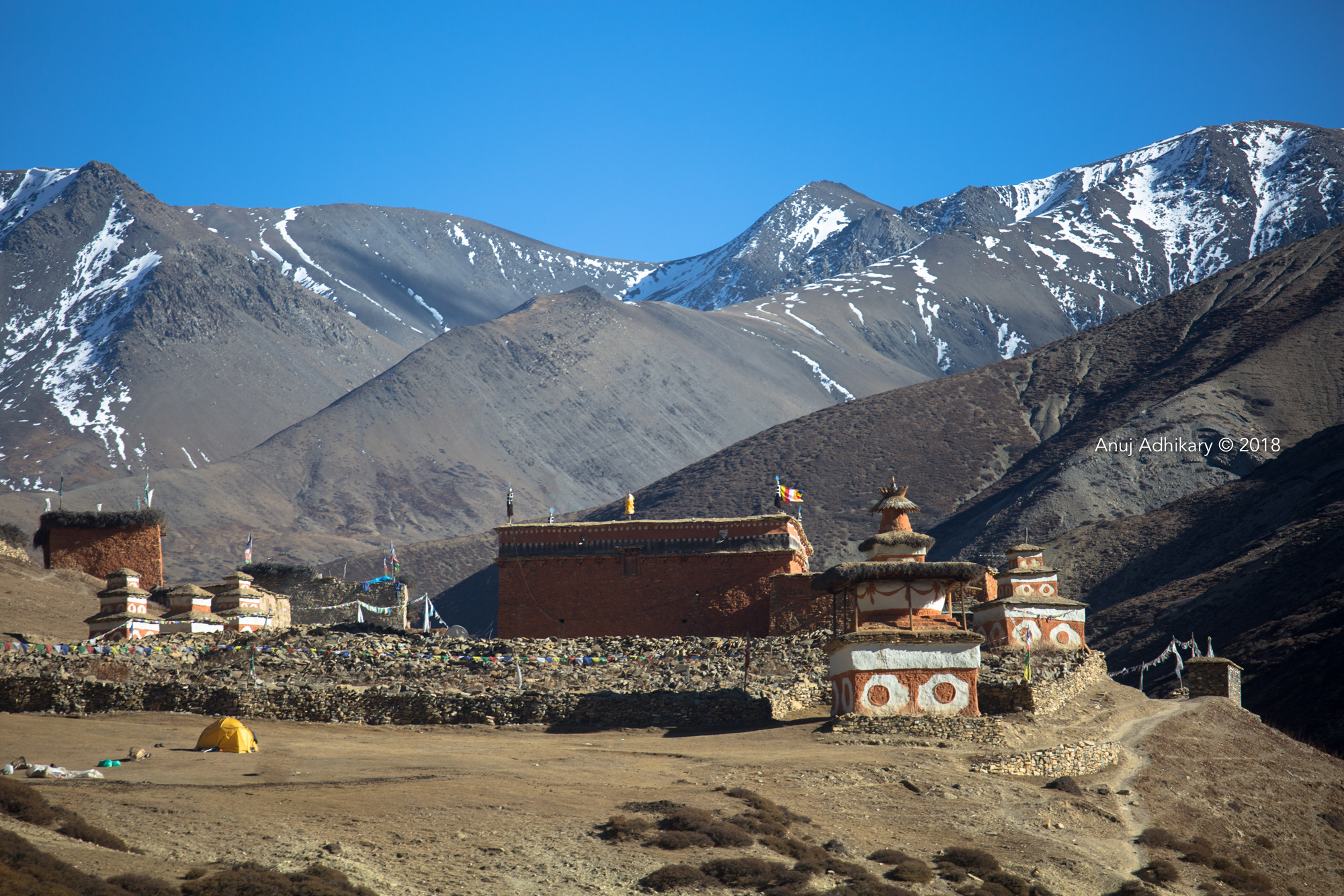
 Group Size:
2 PAX
Group Size:
2 PAX  Duration:
25 Days
Duration:
25 Days 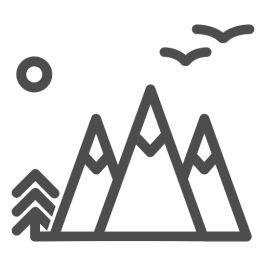 Max Altitude:
5151m (Kang La Pass)
Max Altitude:
5151m (Kang La Pass)  Trip Grading:
Challenging
Trip Grading:
Challenging  Trip Start:
Kathmandu
Trip Start:
Kathmandu  Trip End:
Kathmandu
Trip End:
Kathmandu  Average Dist. per Day
12Km
Average Dist. per Day
12Km  Average Time per Day
6hrs
Average Time per Day
6hrs 